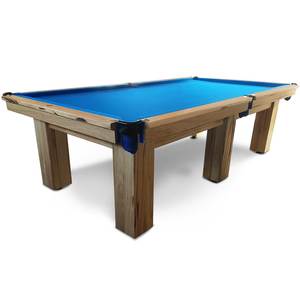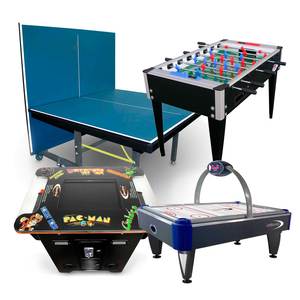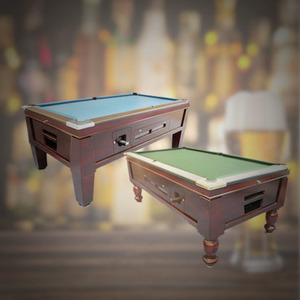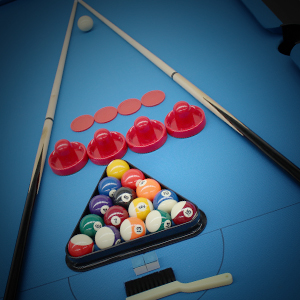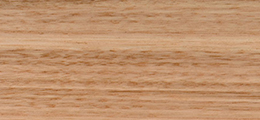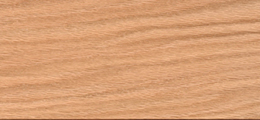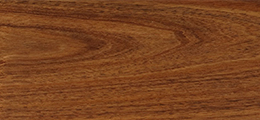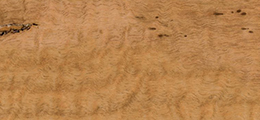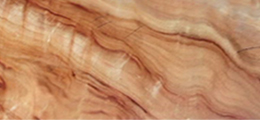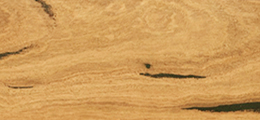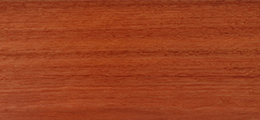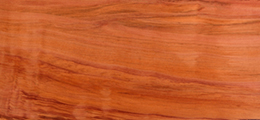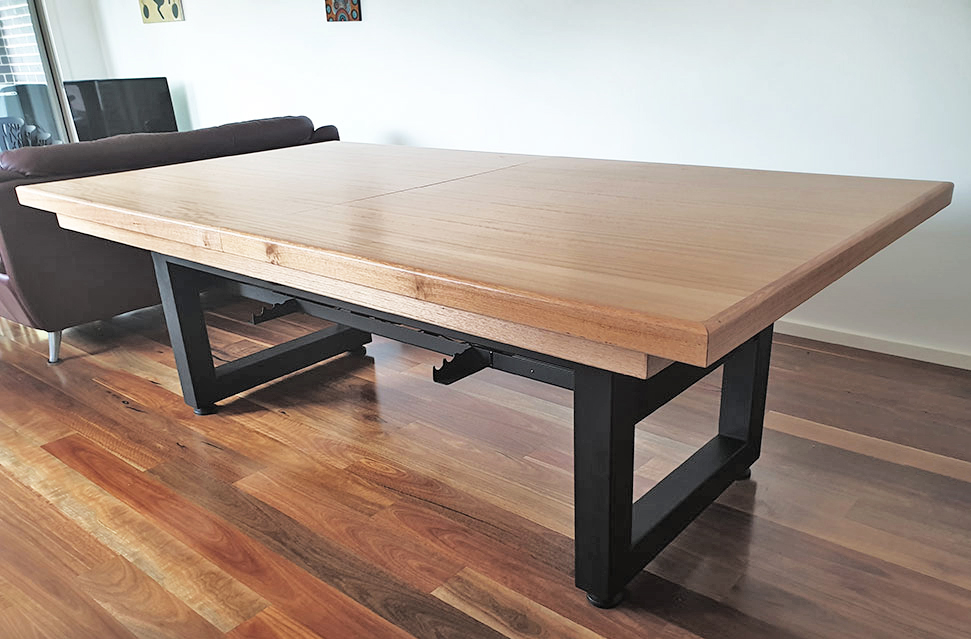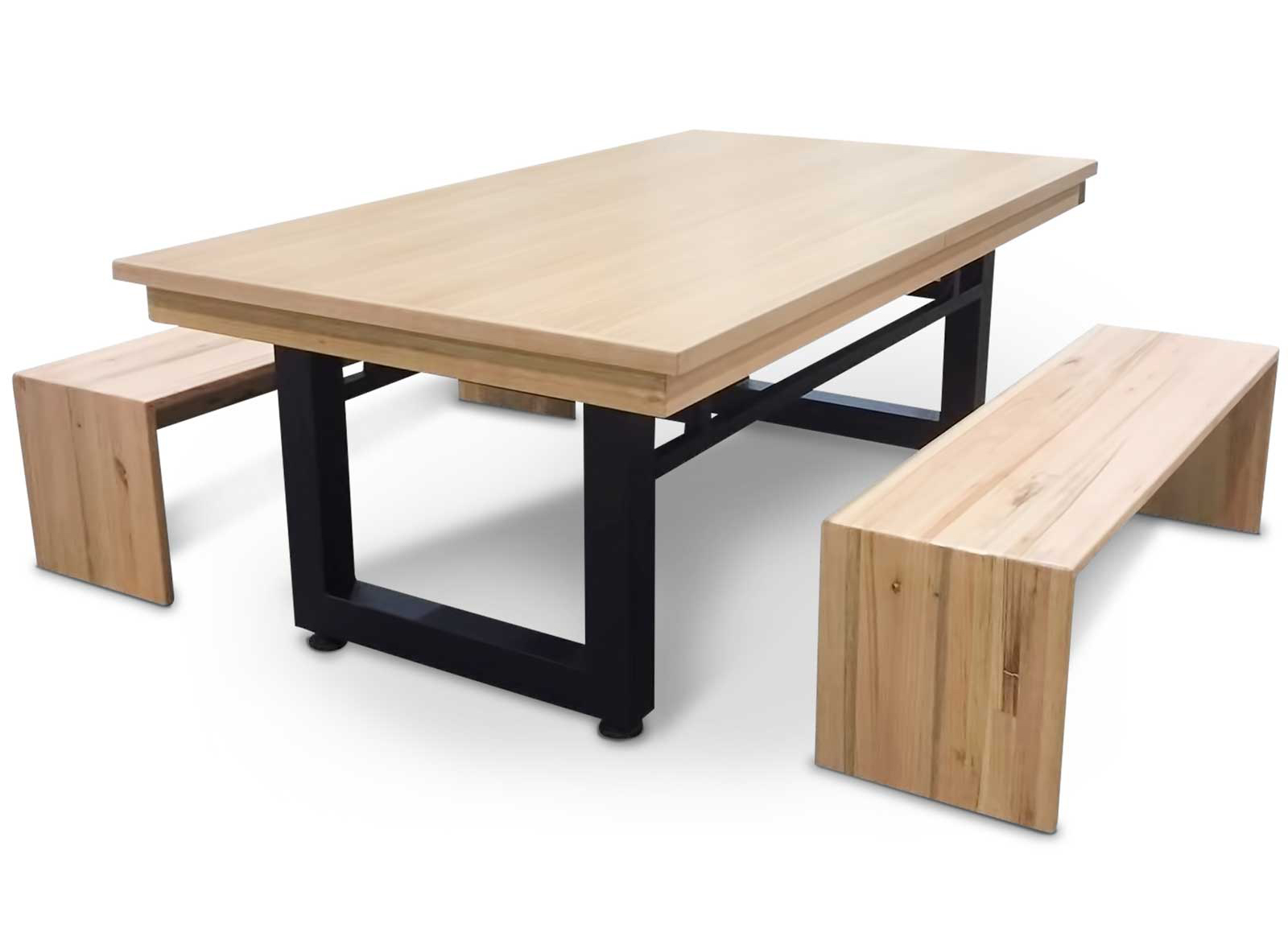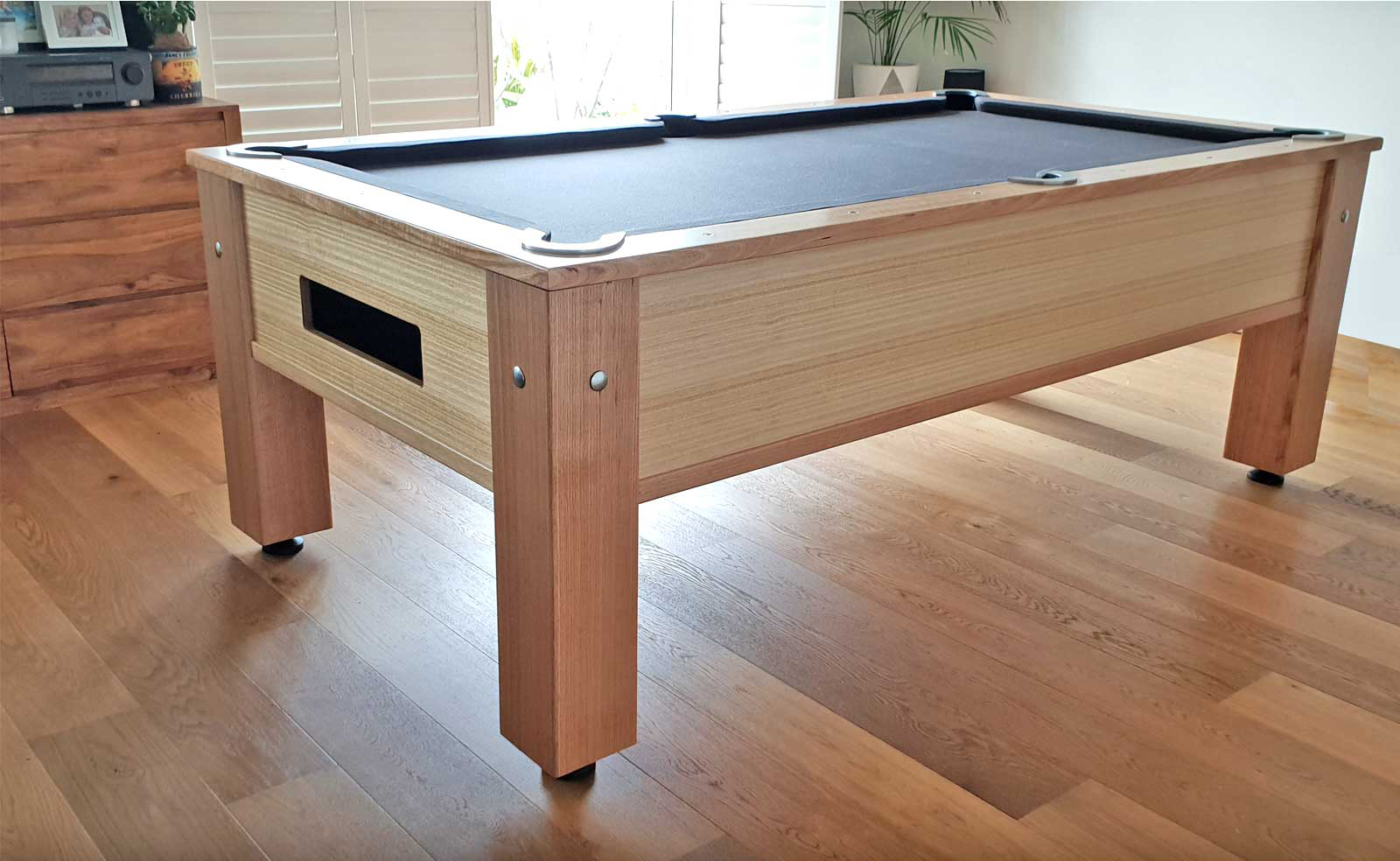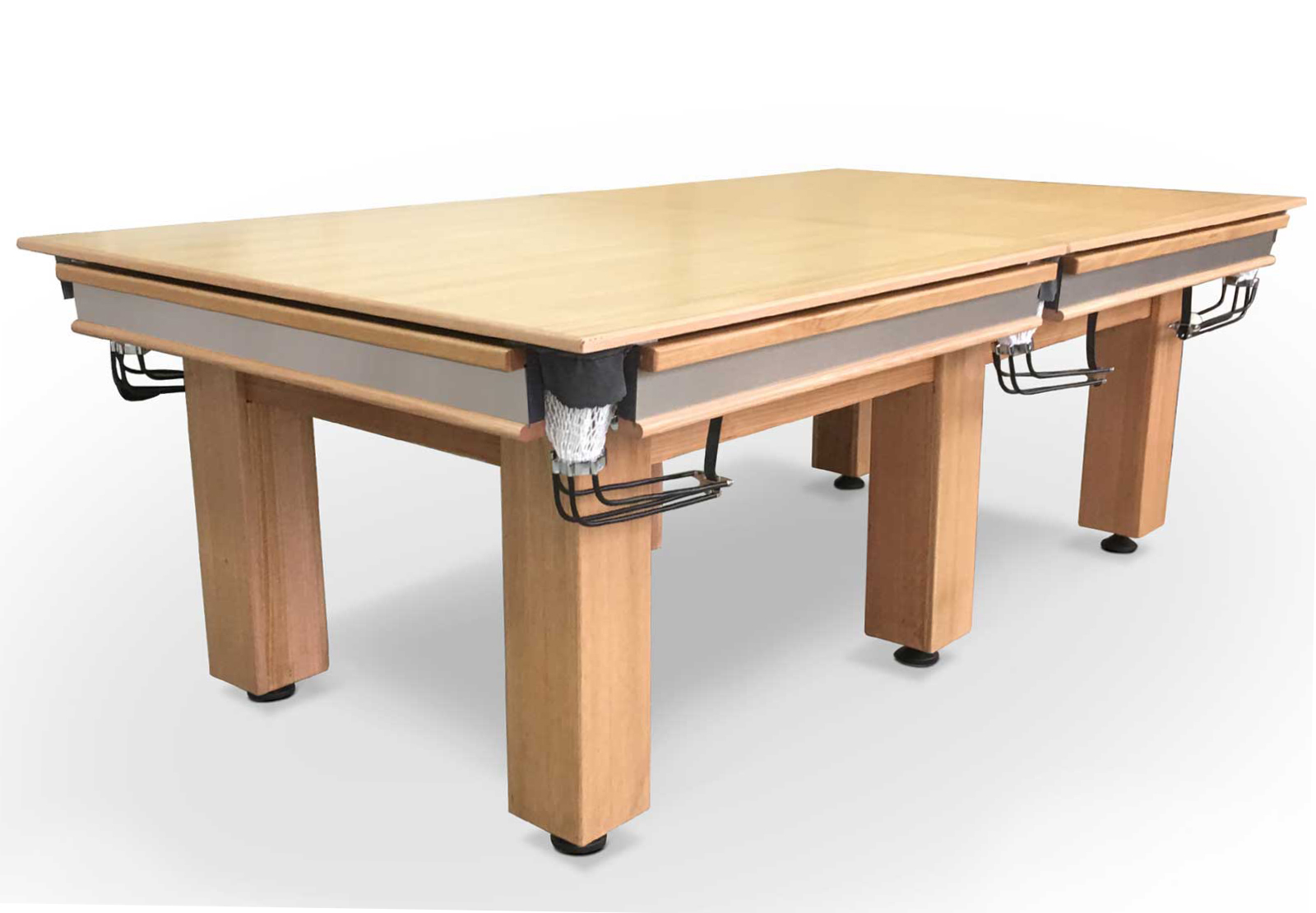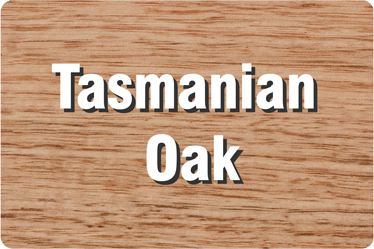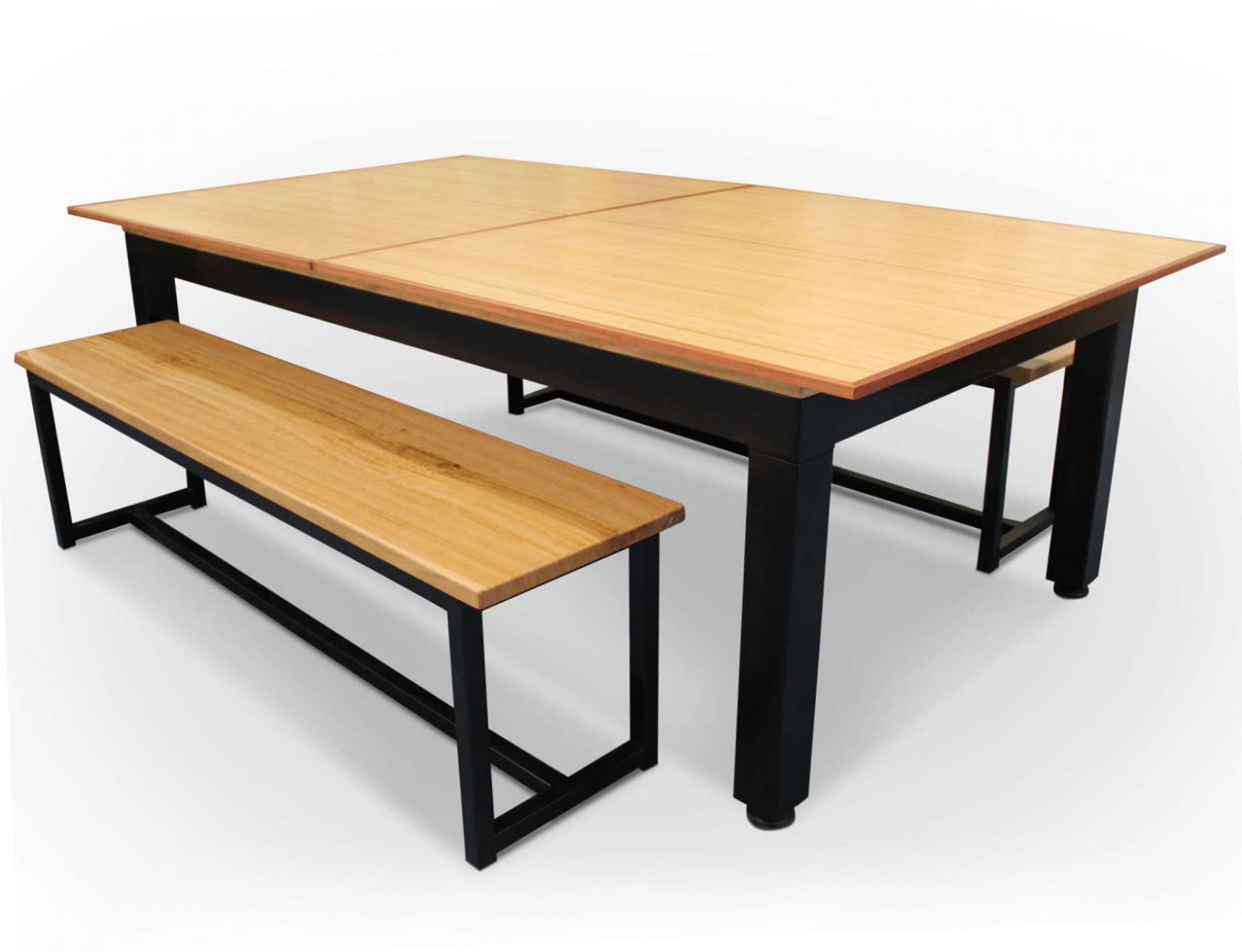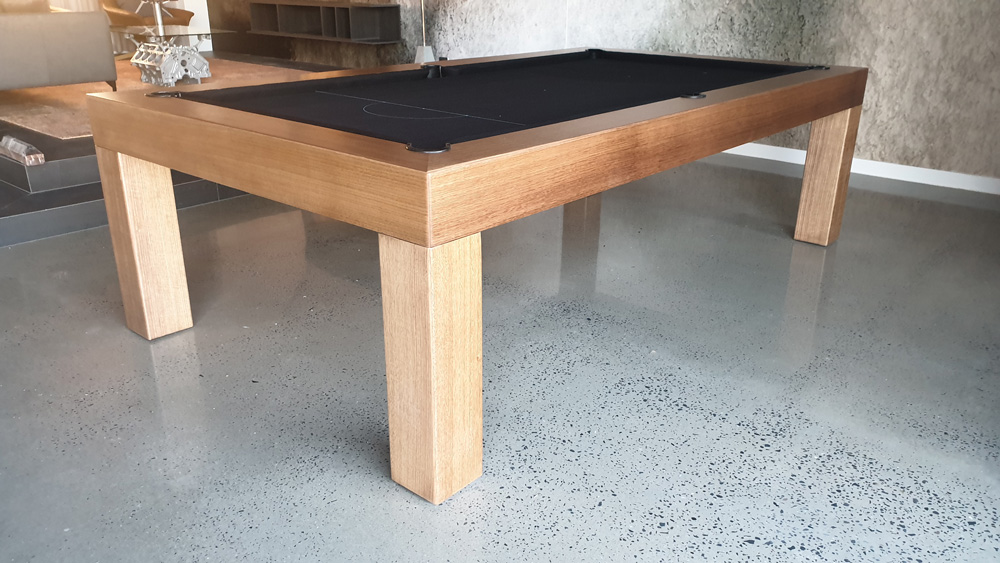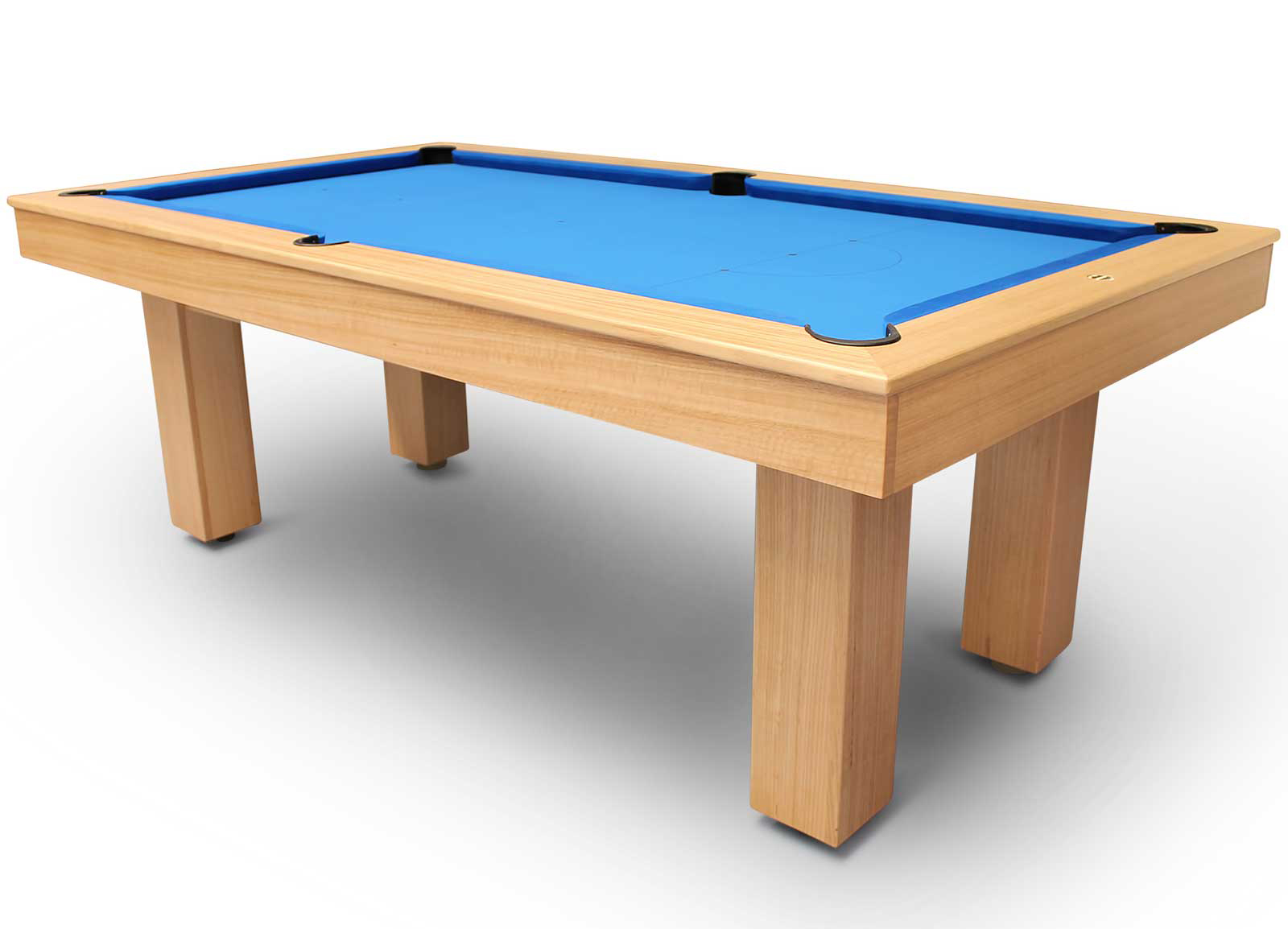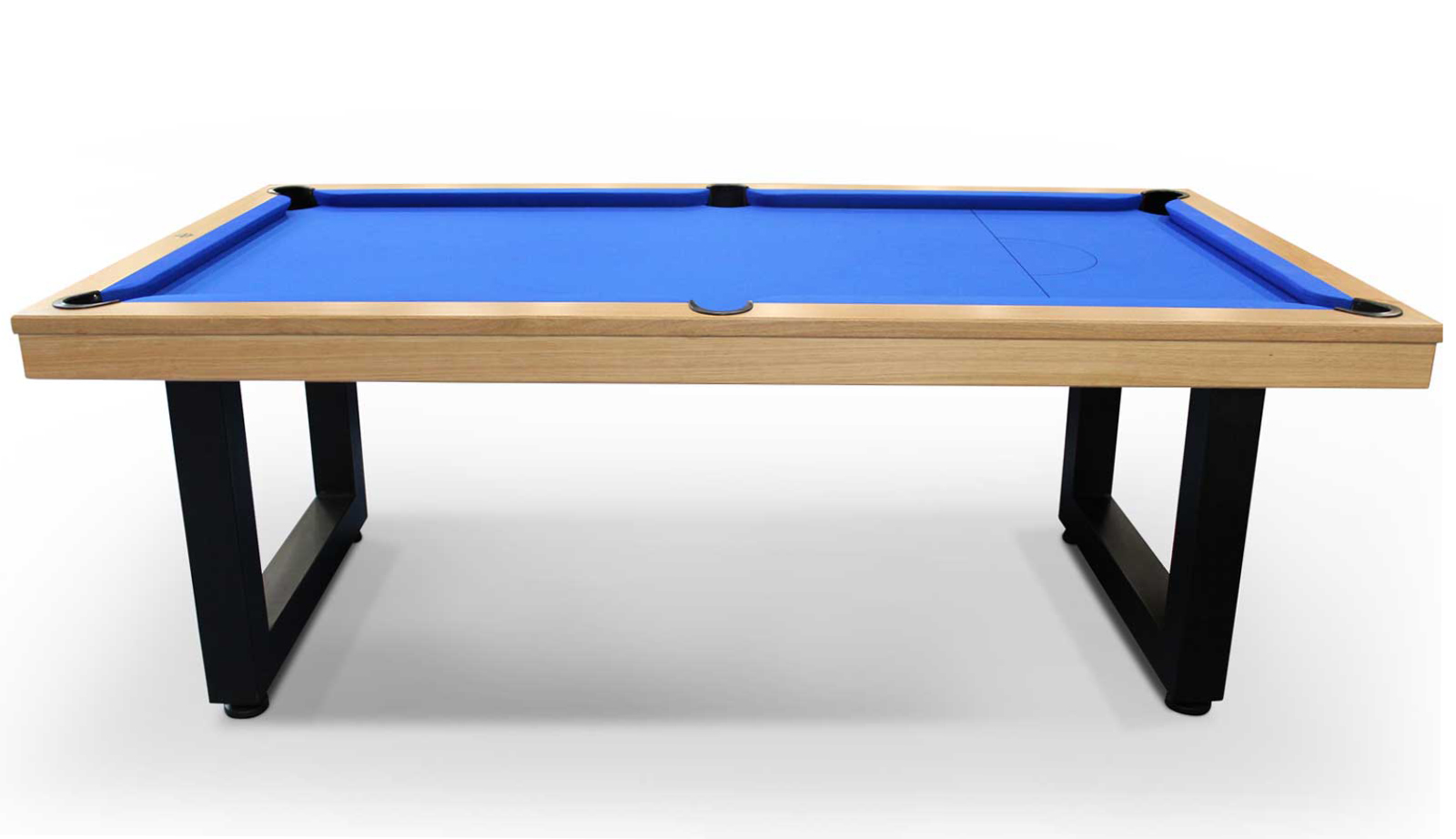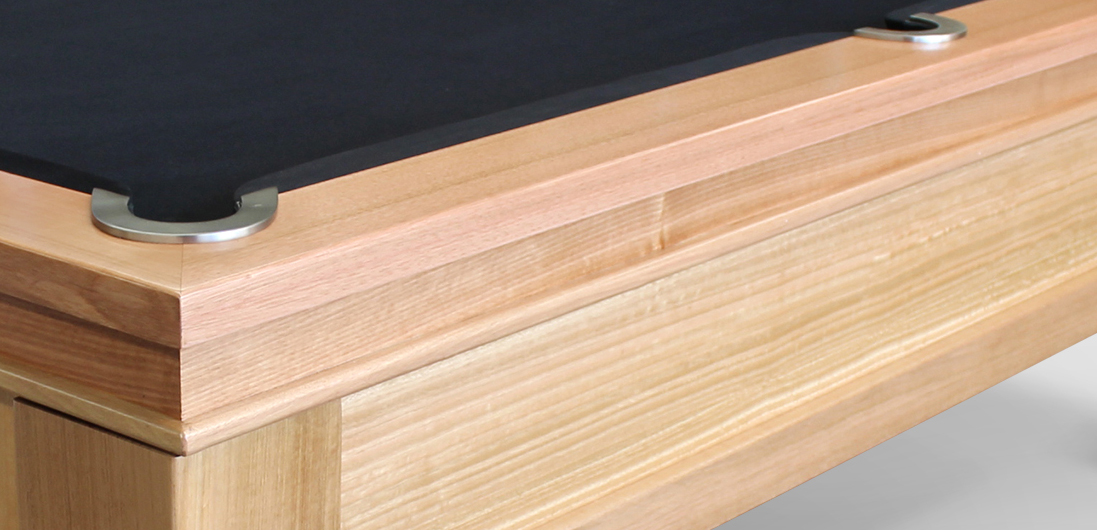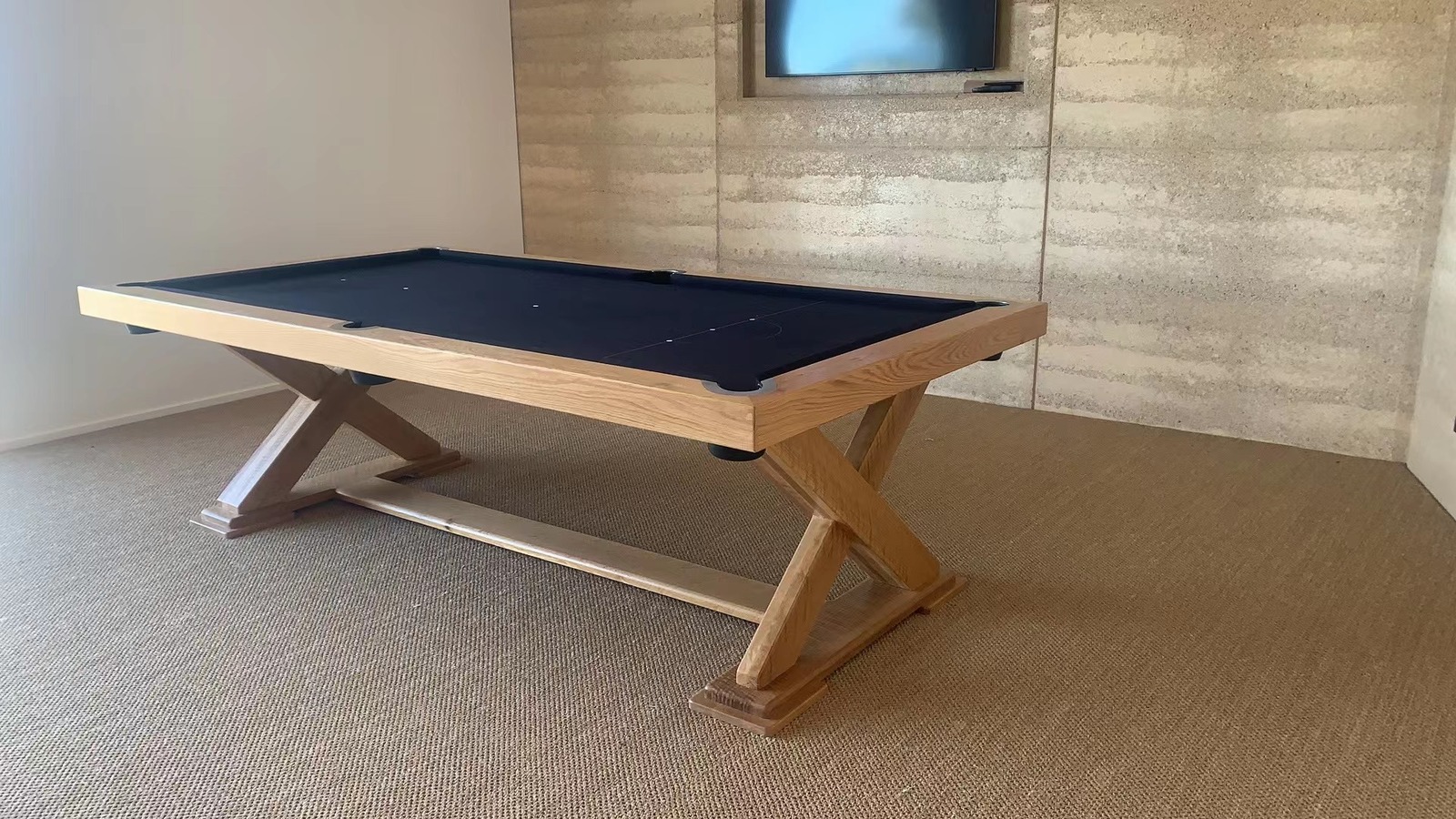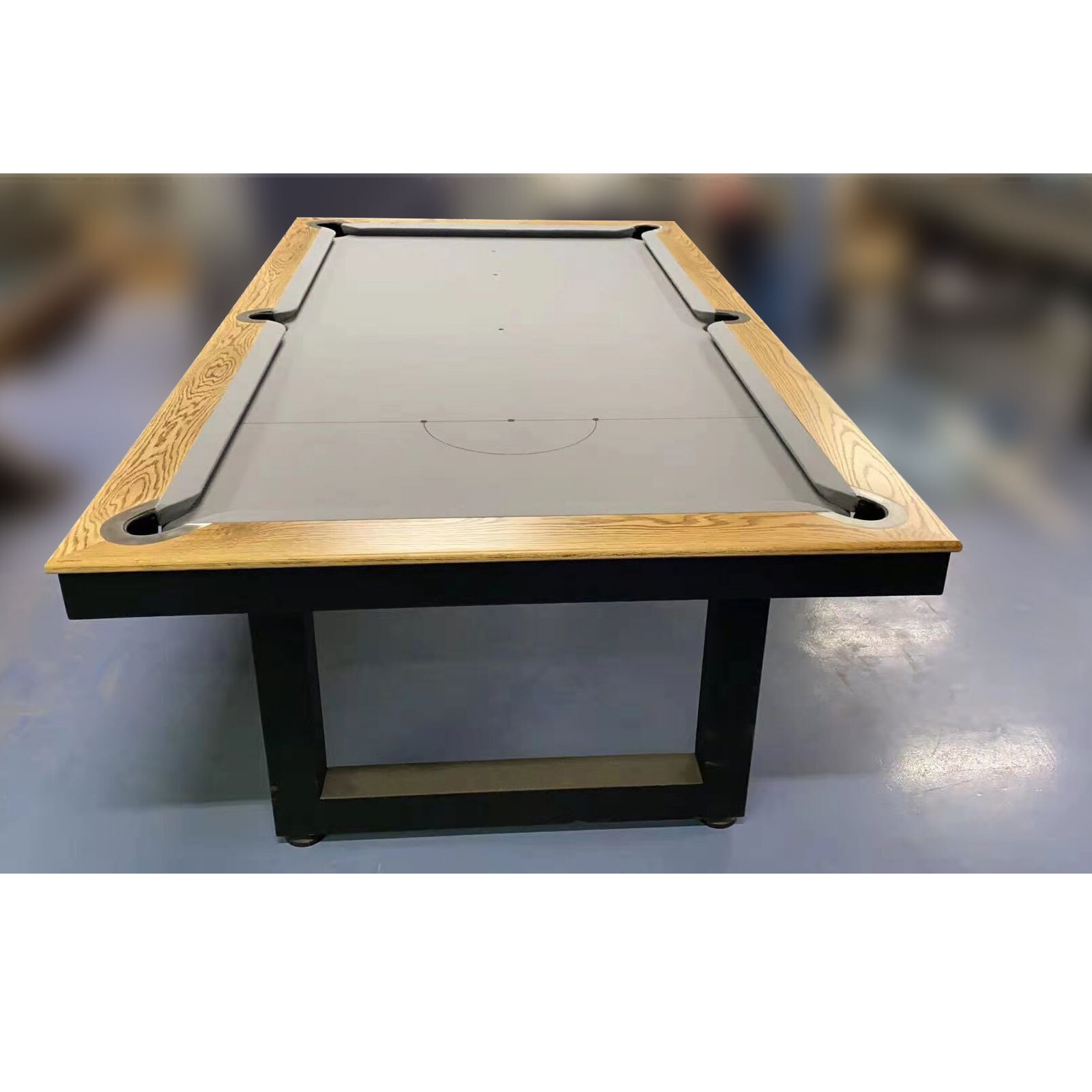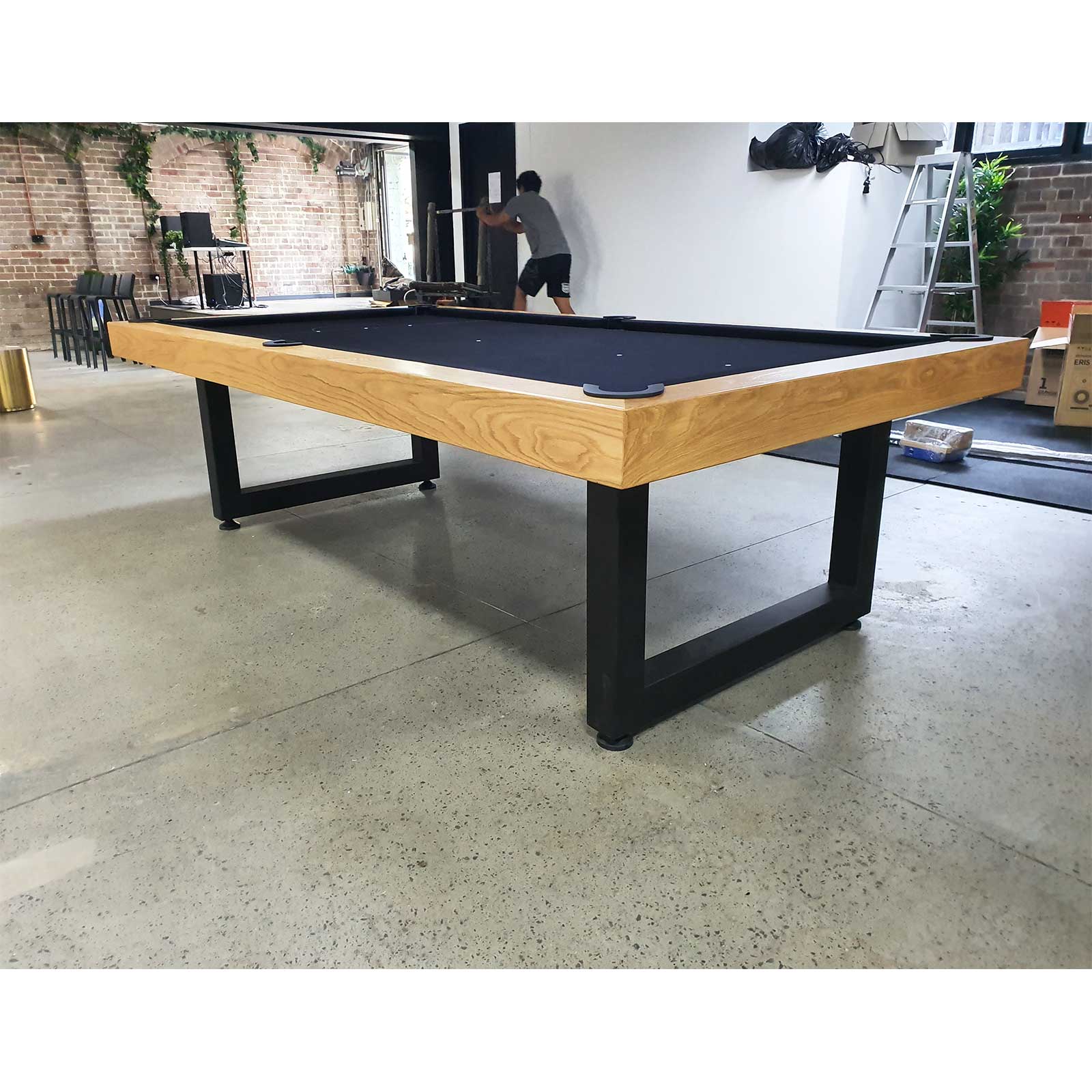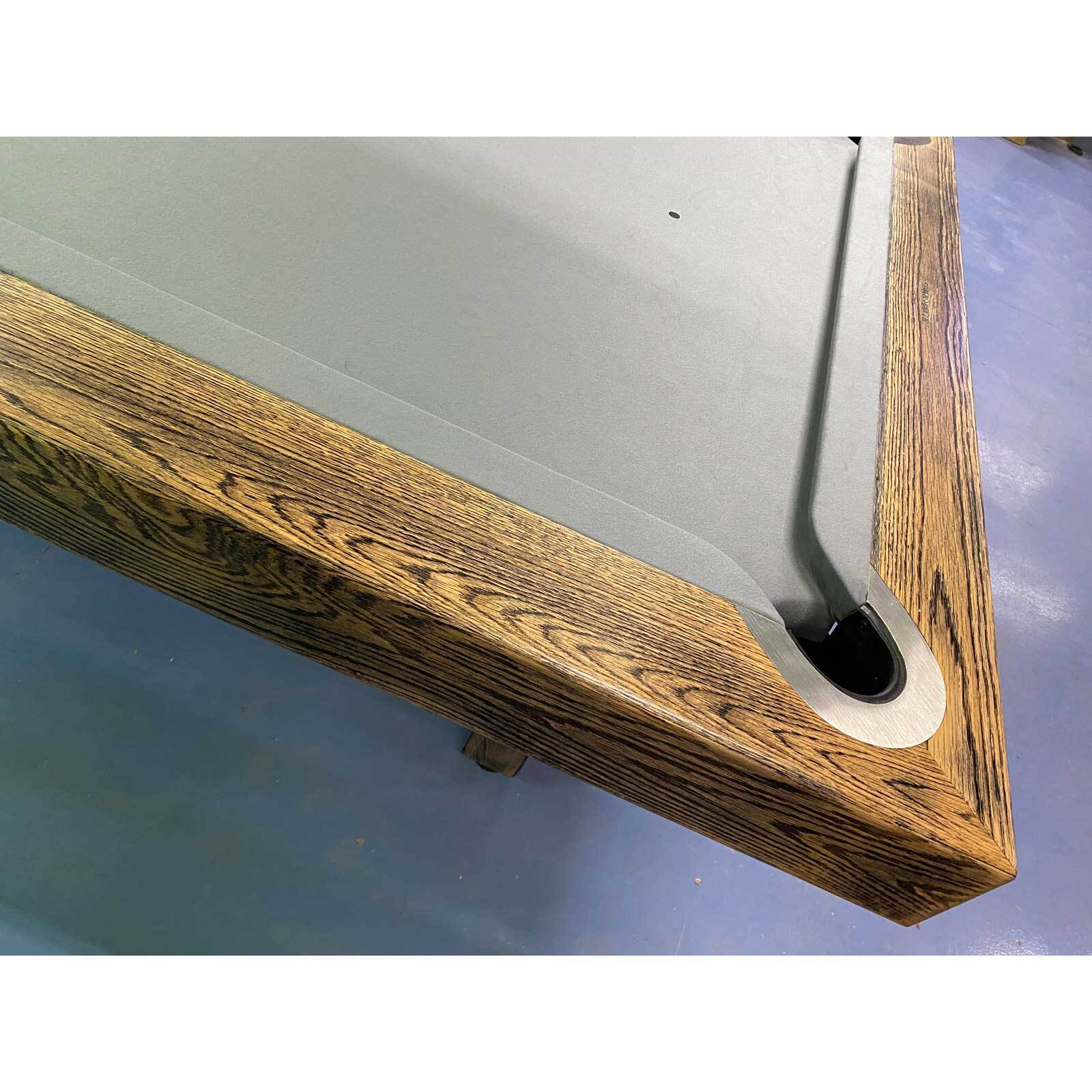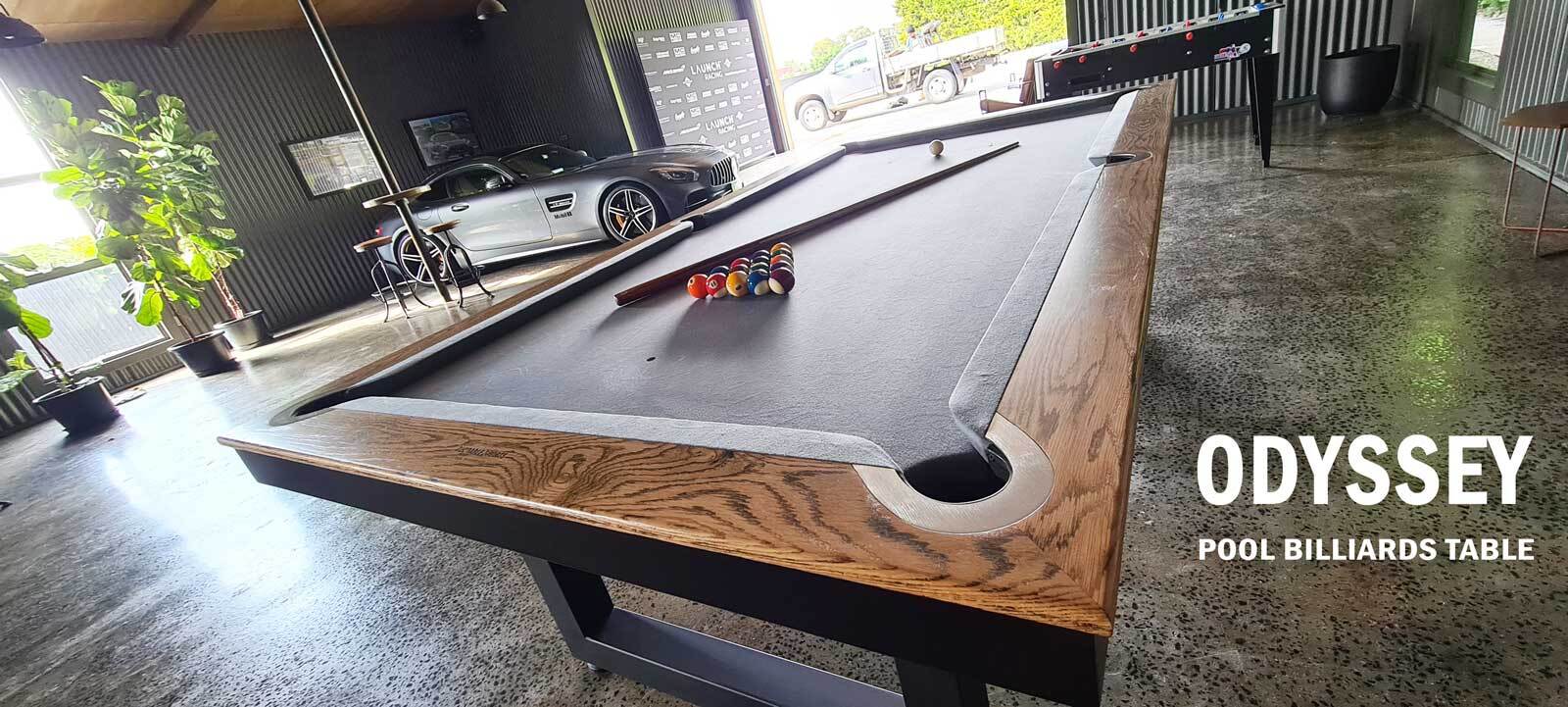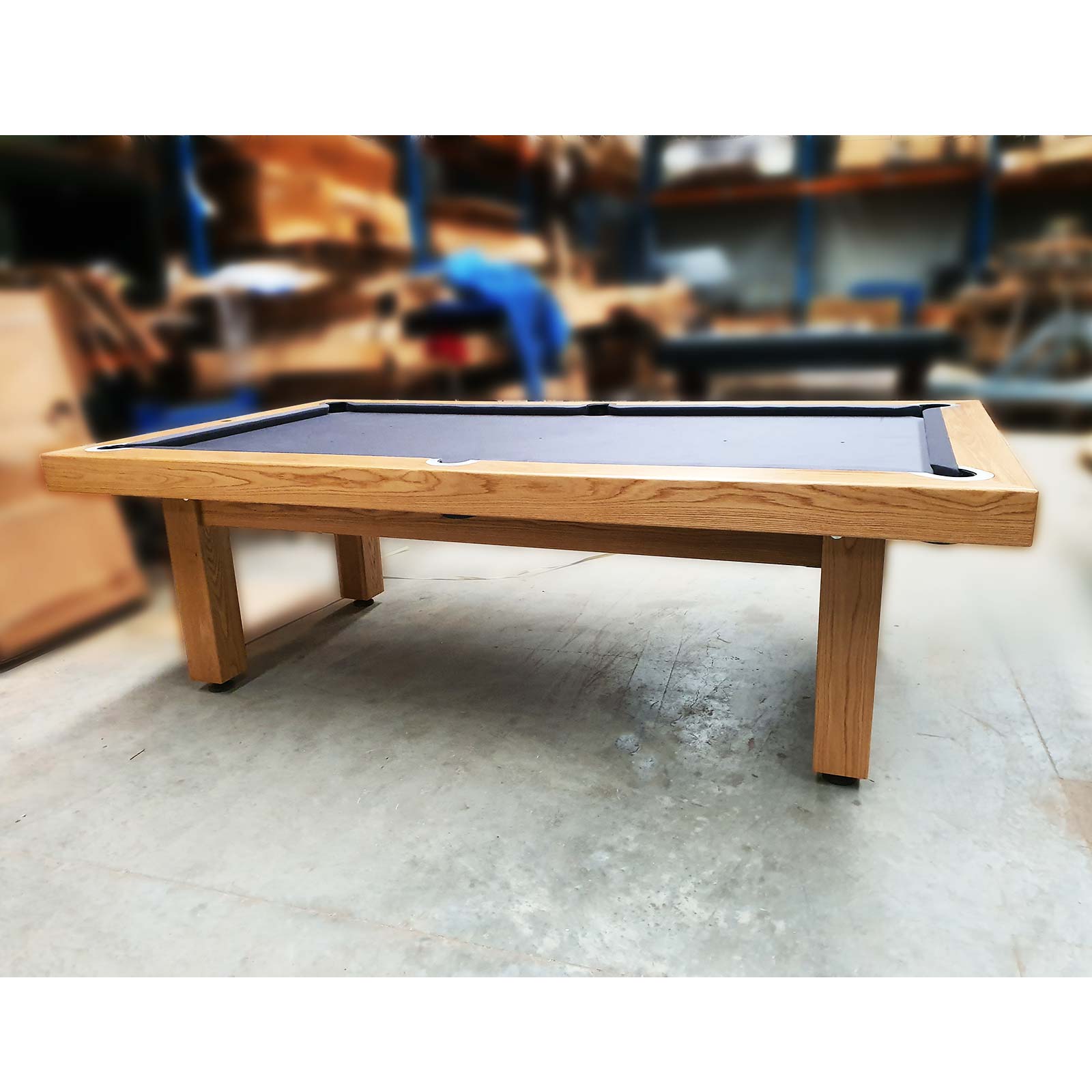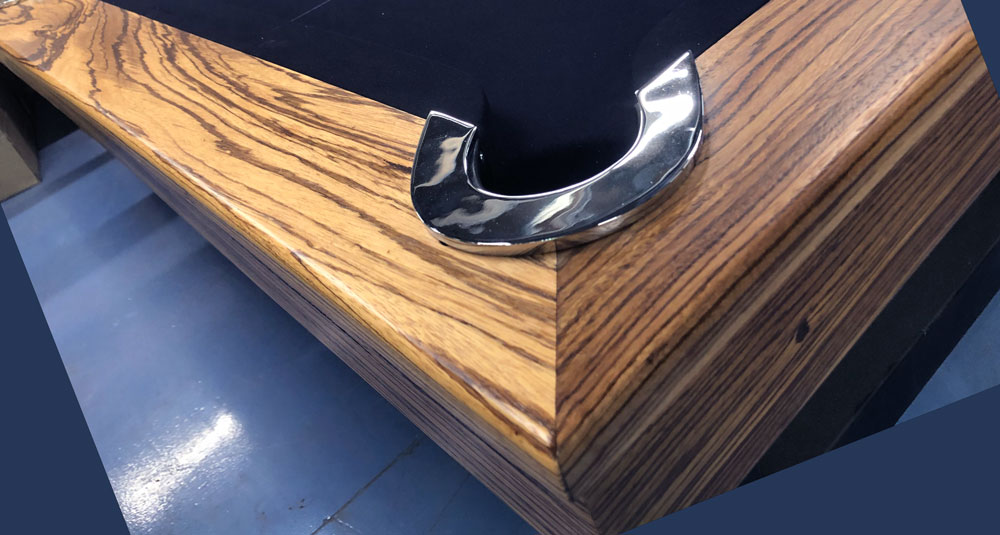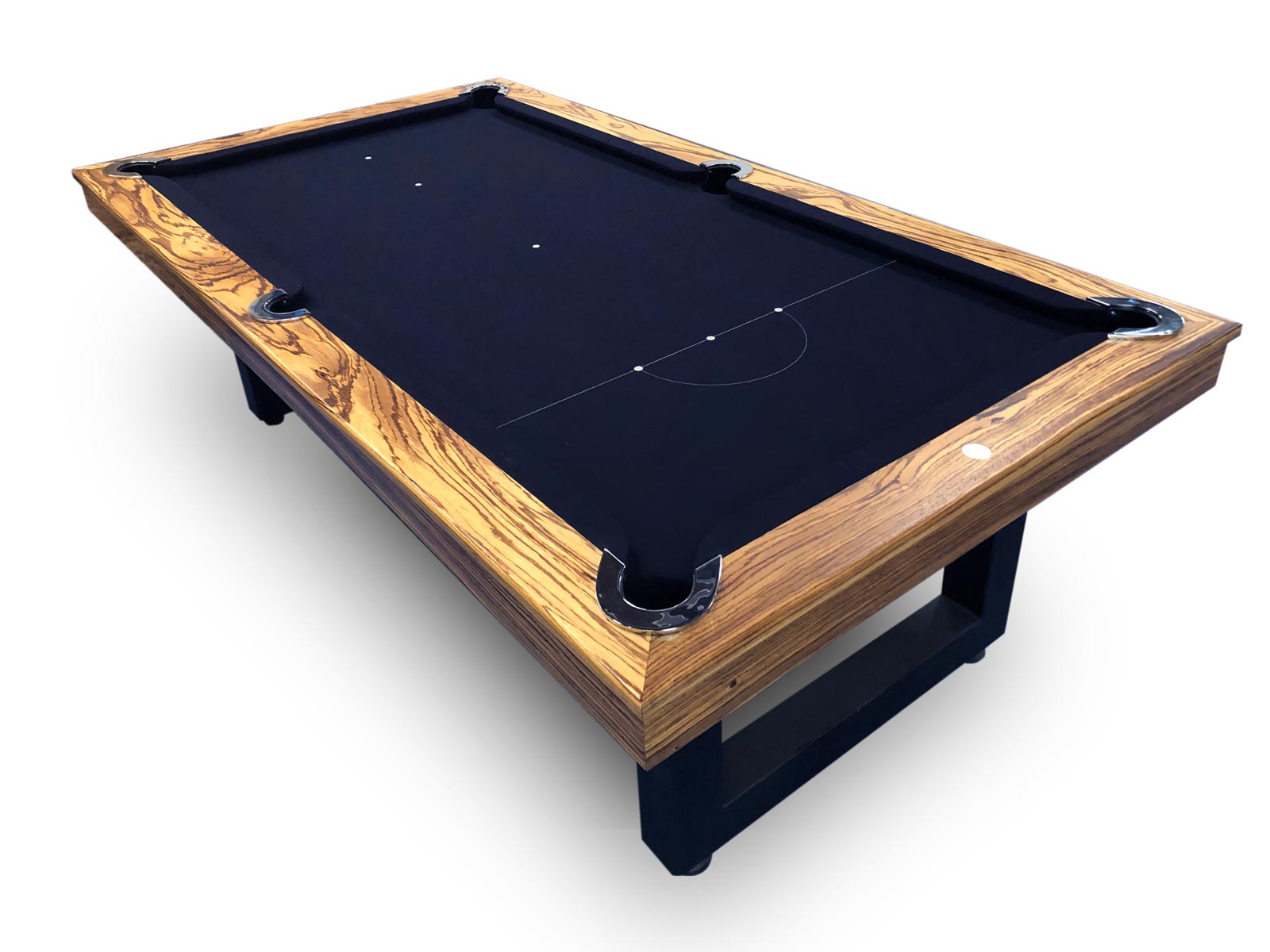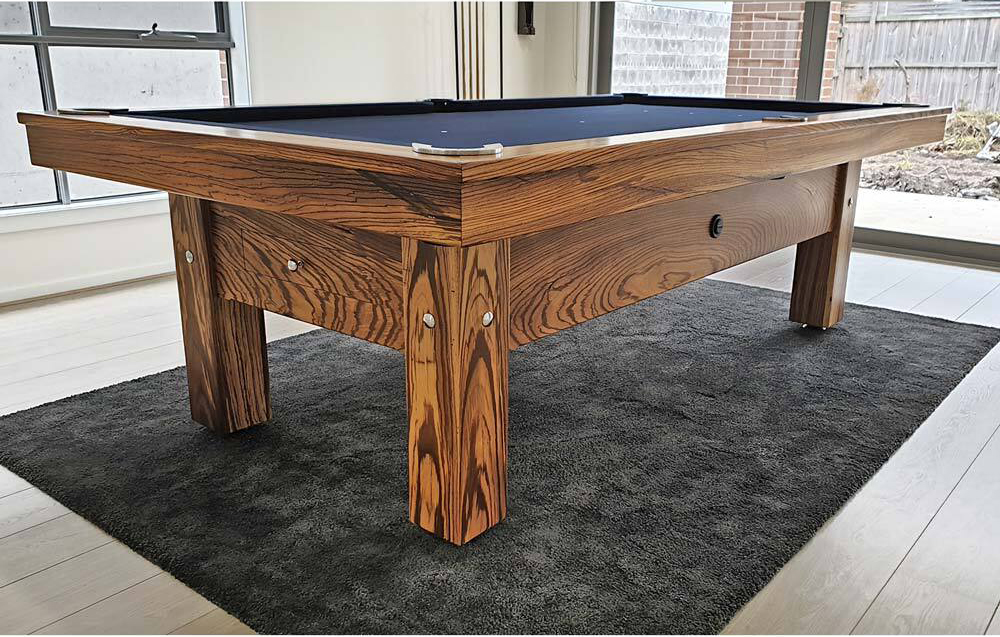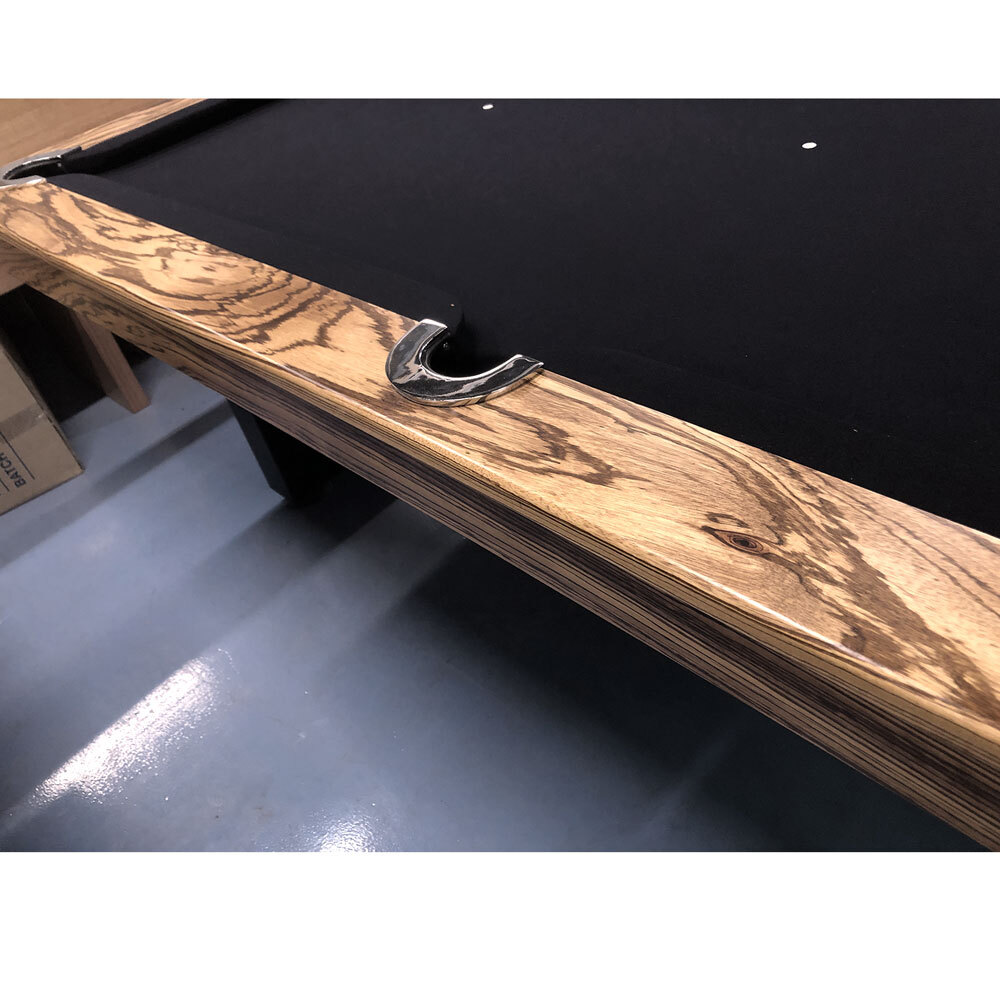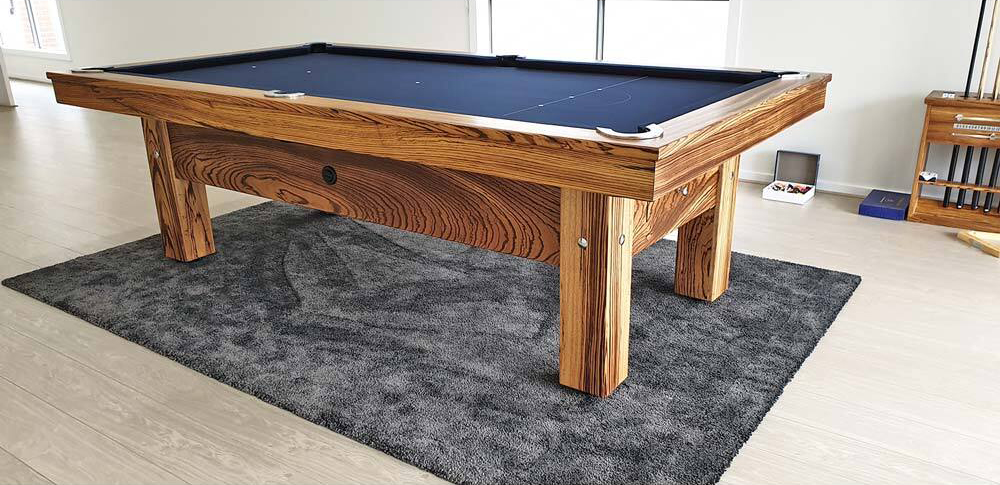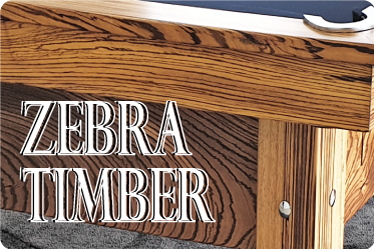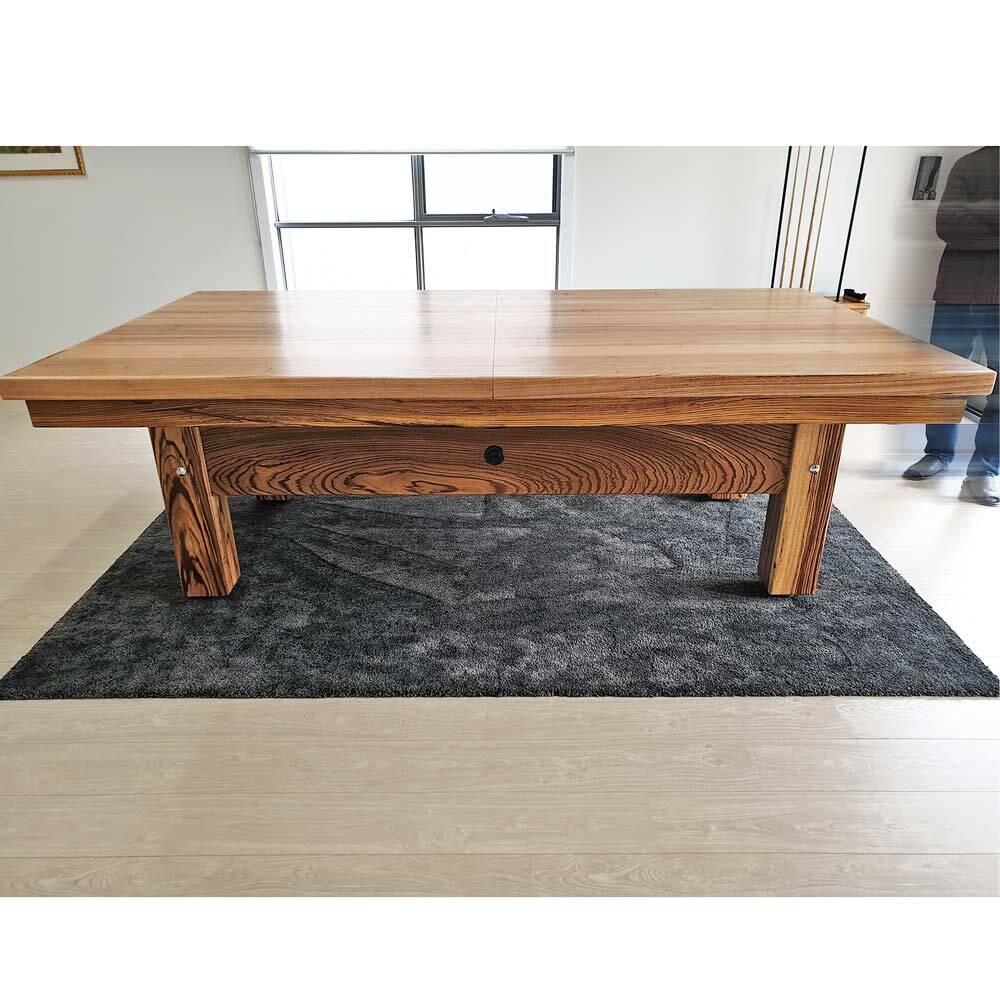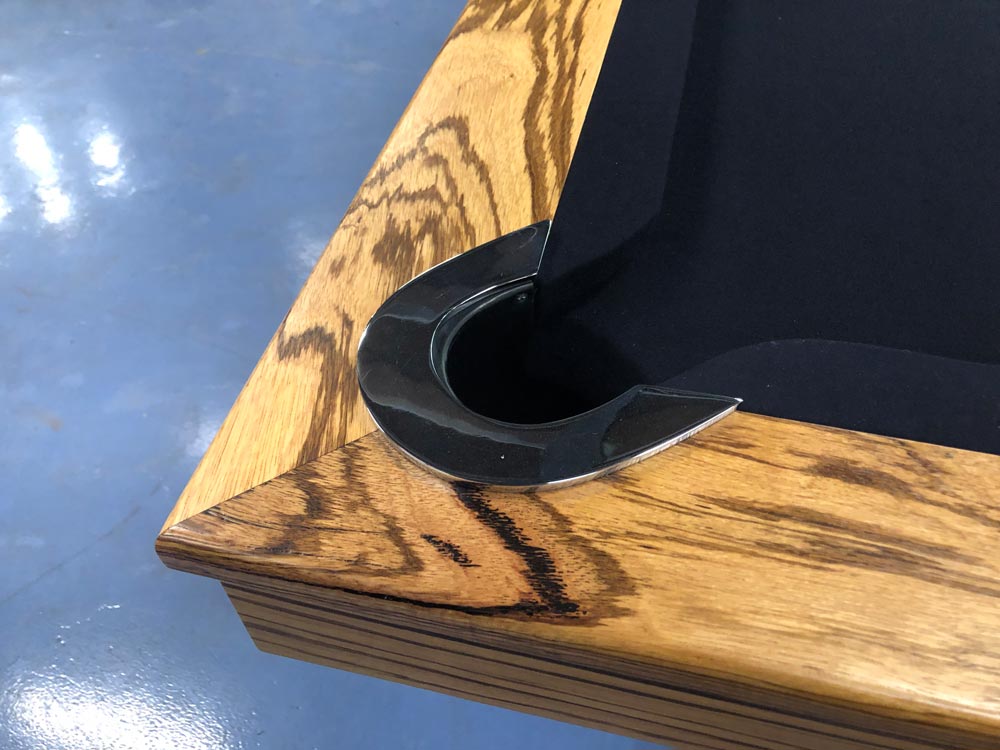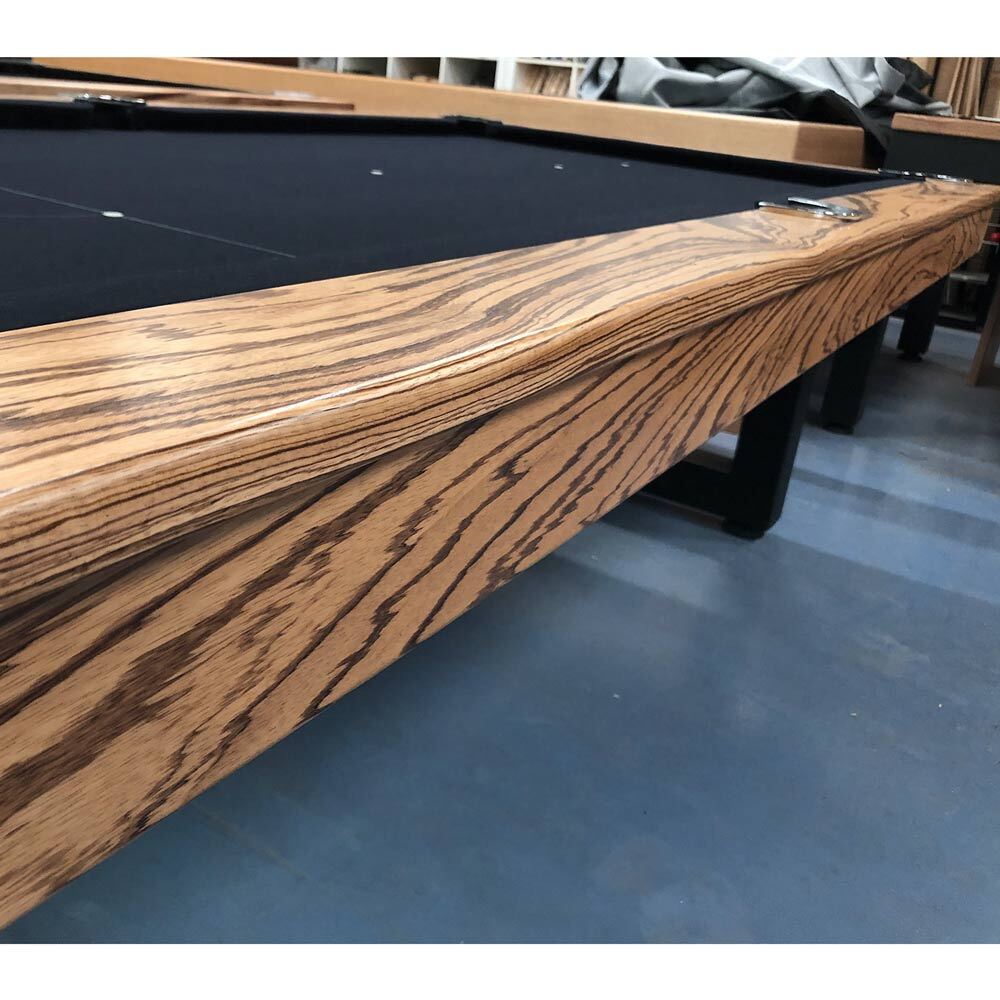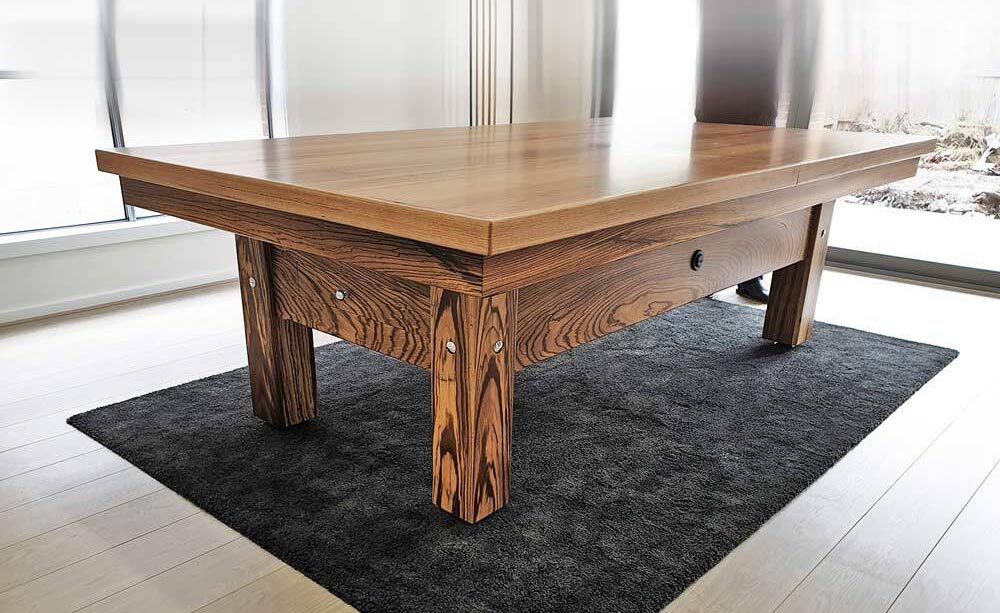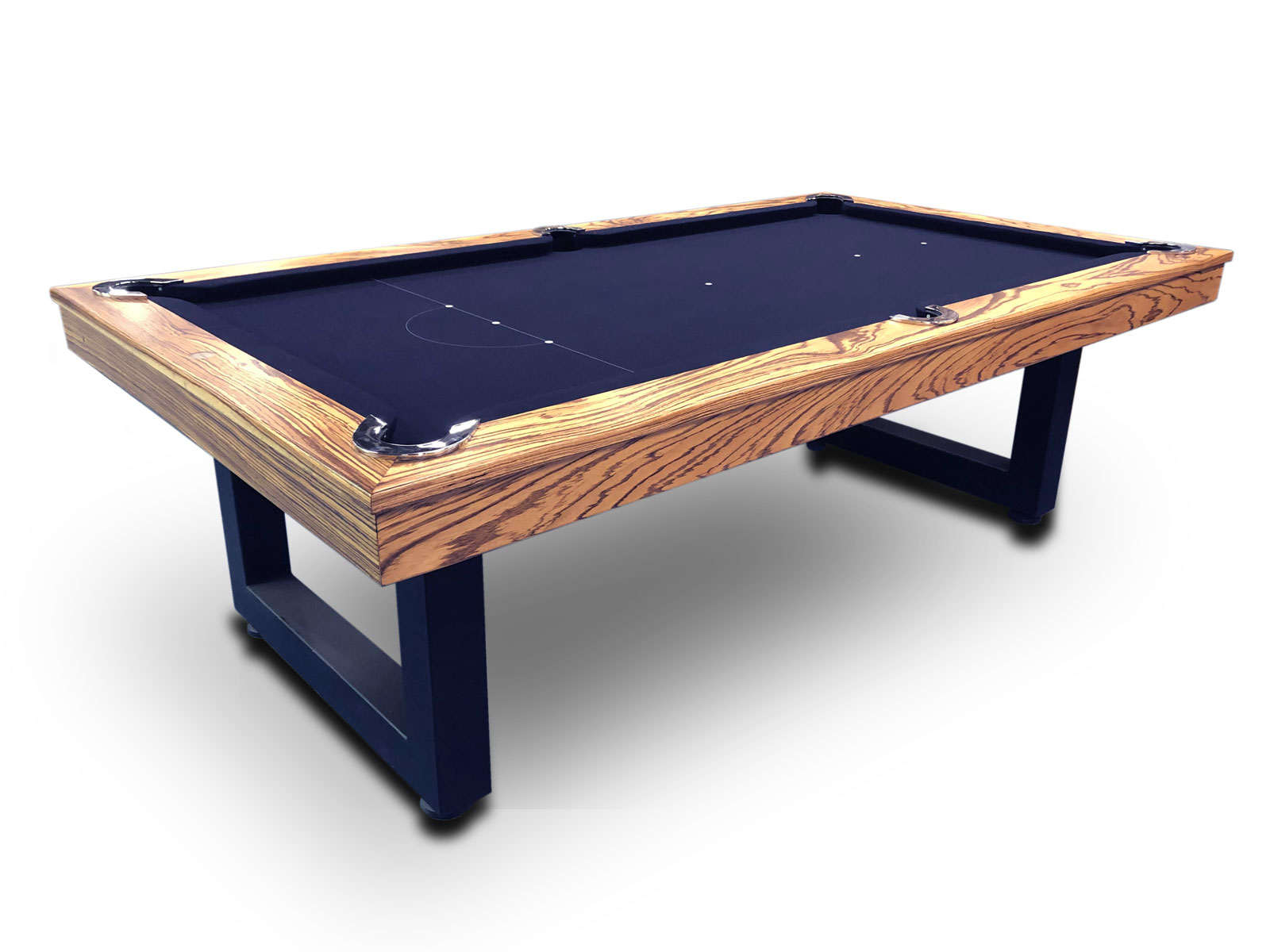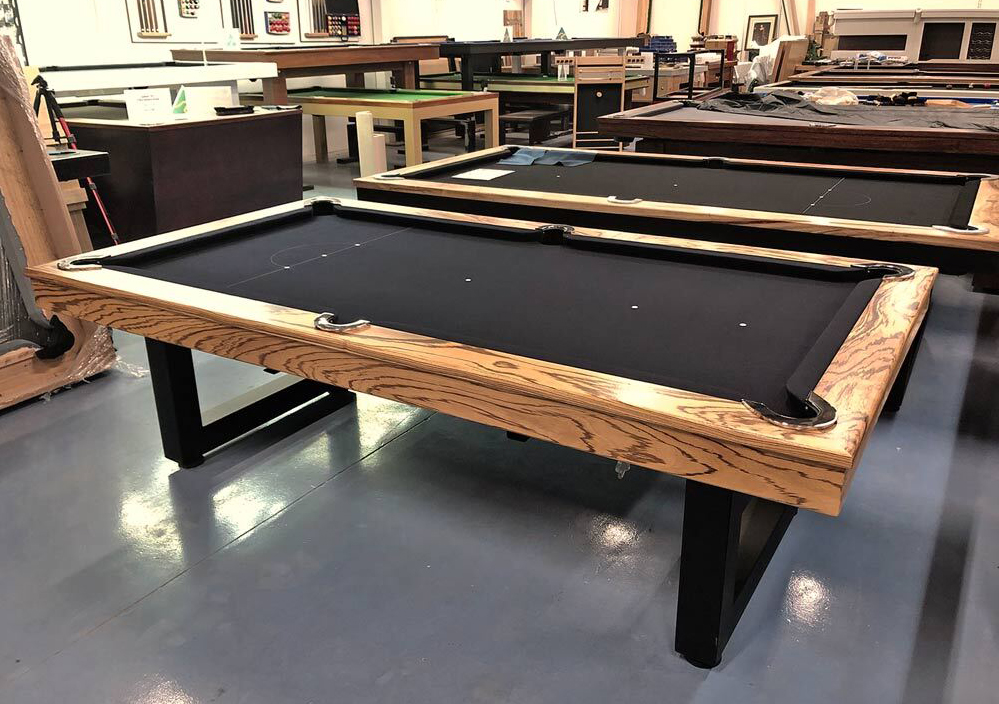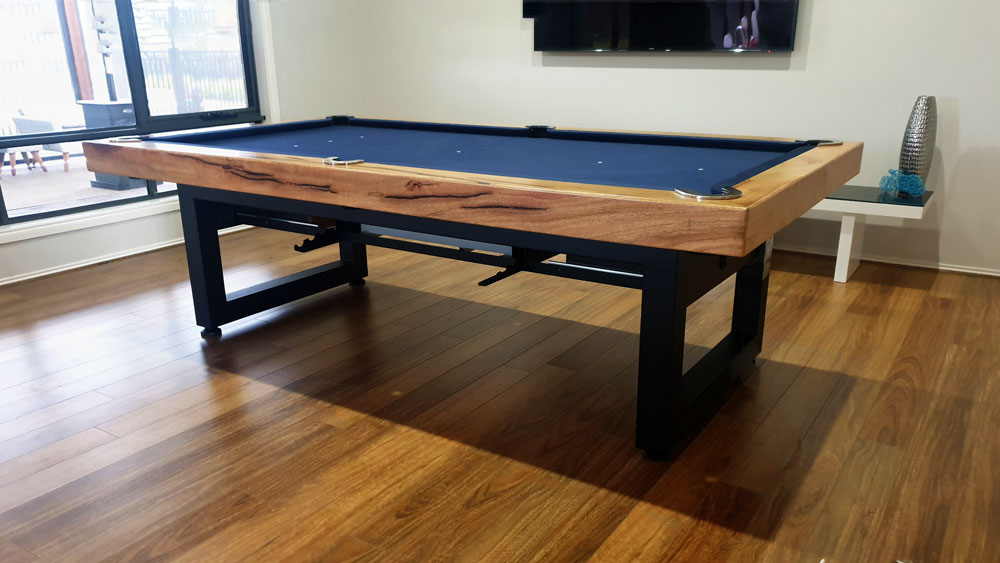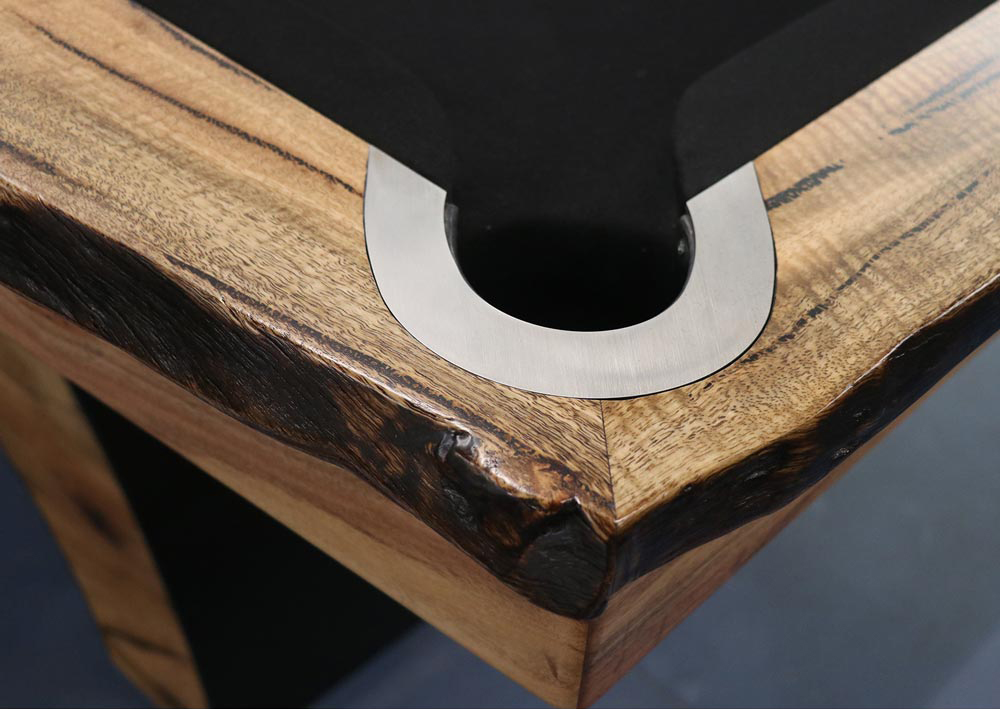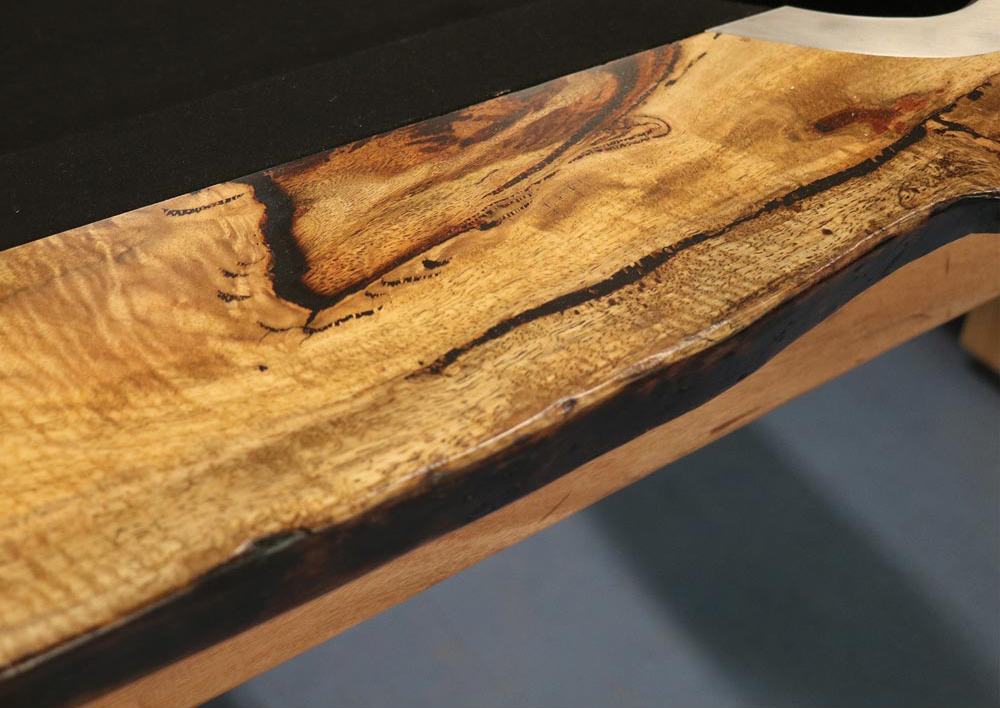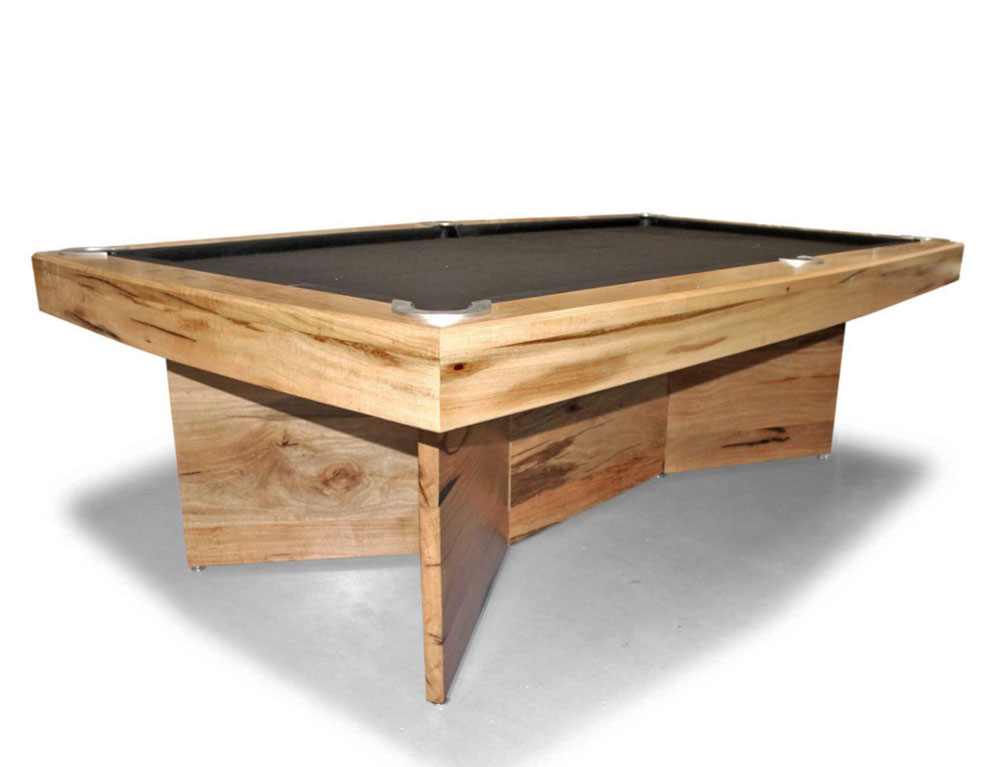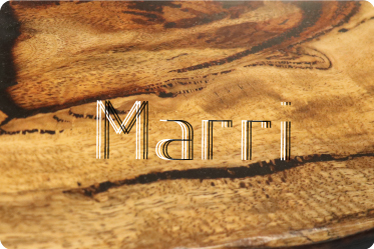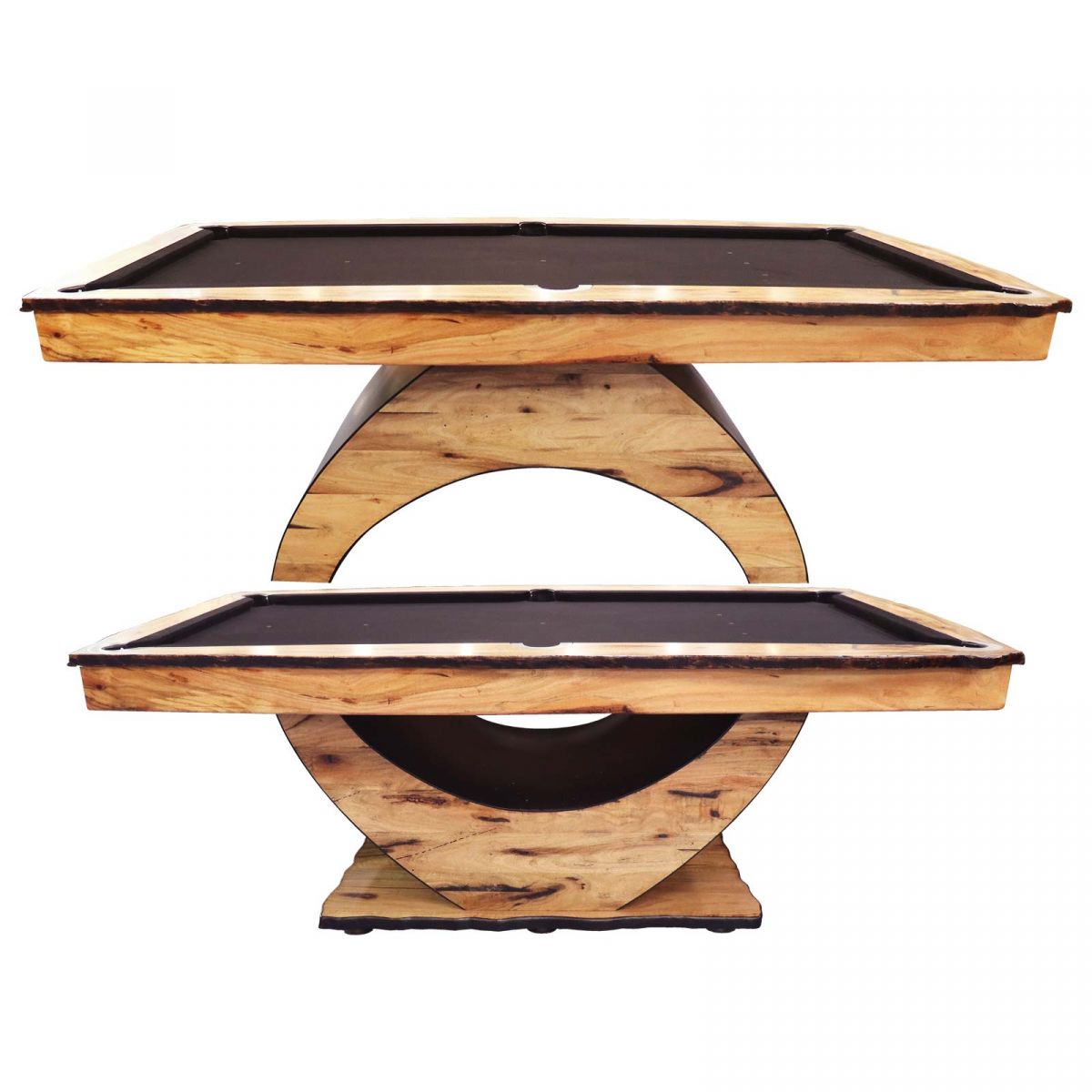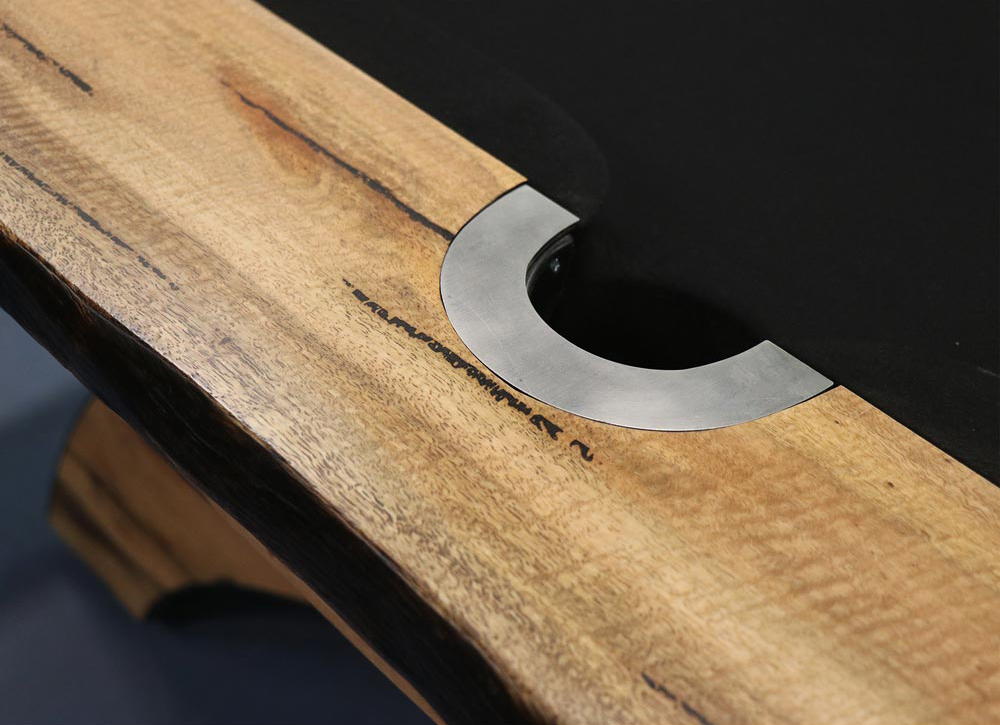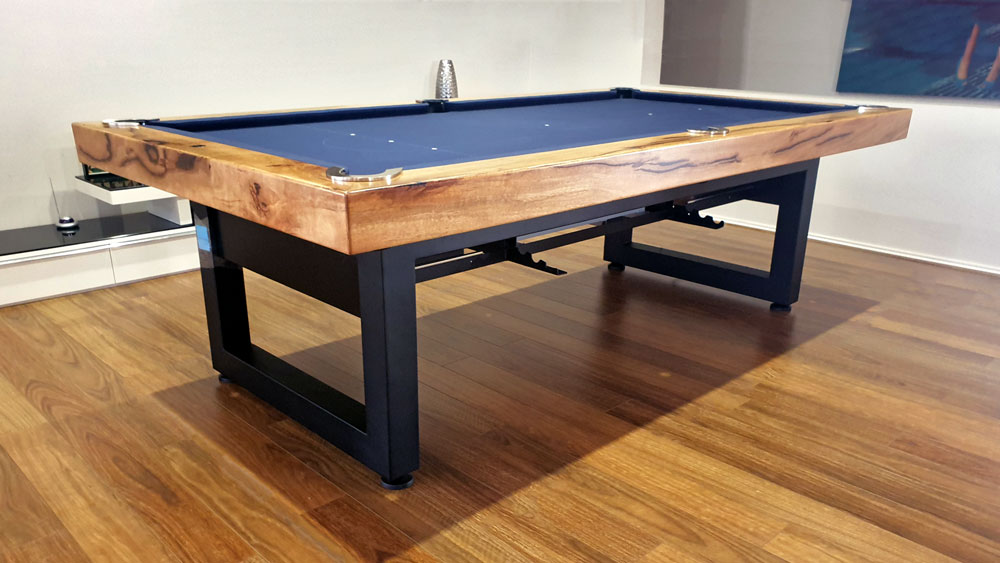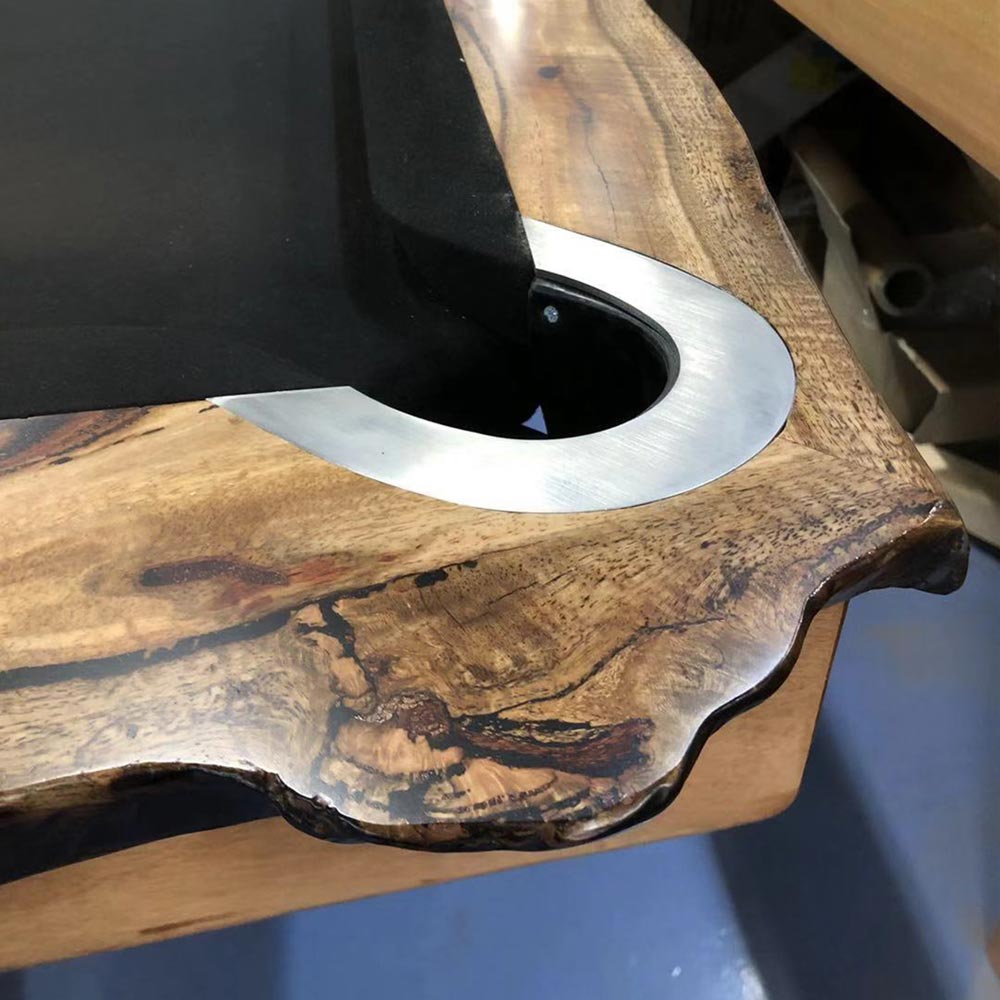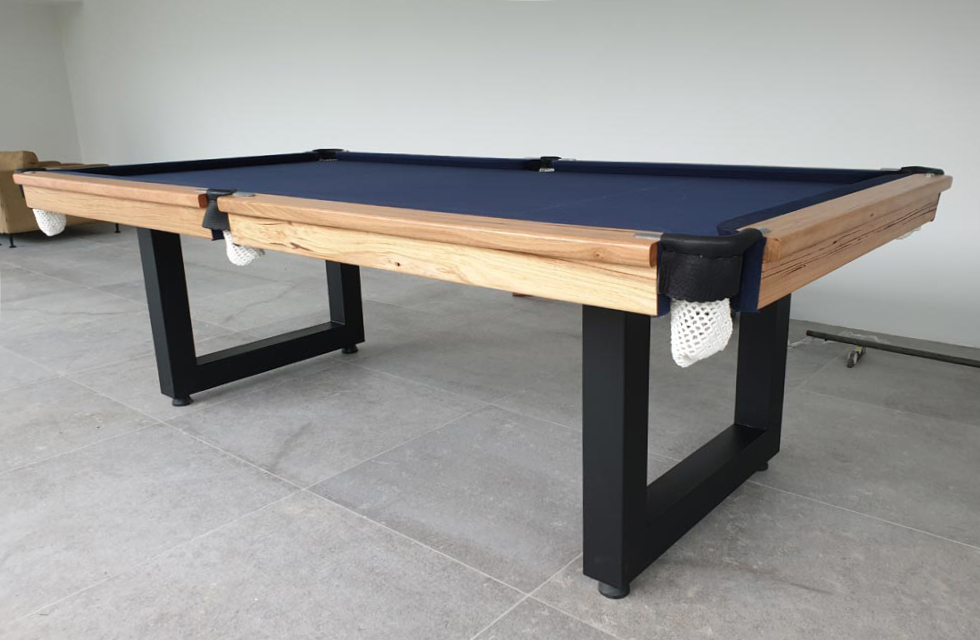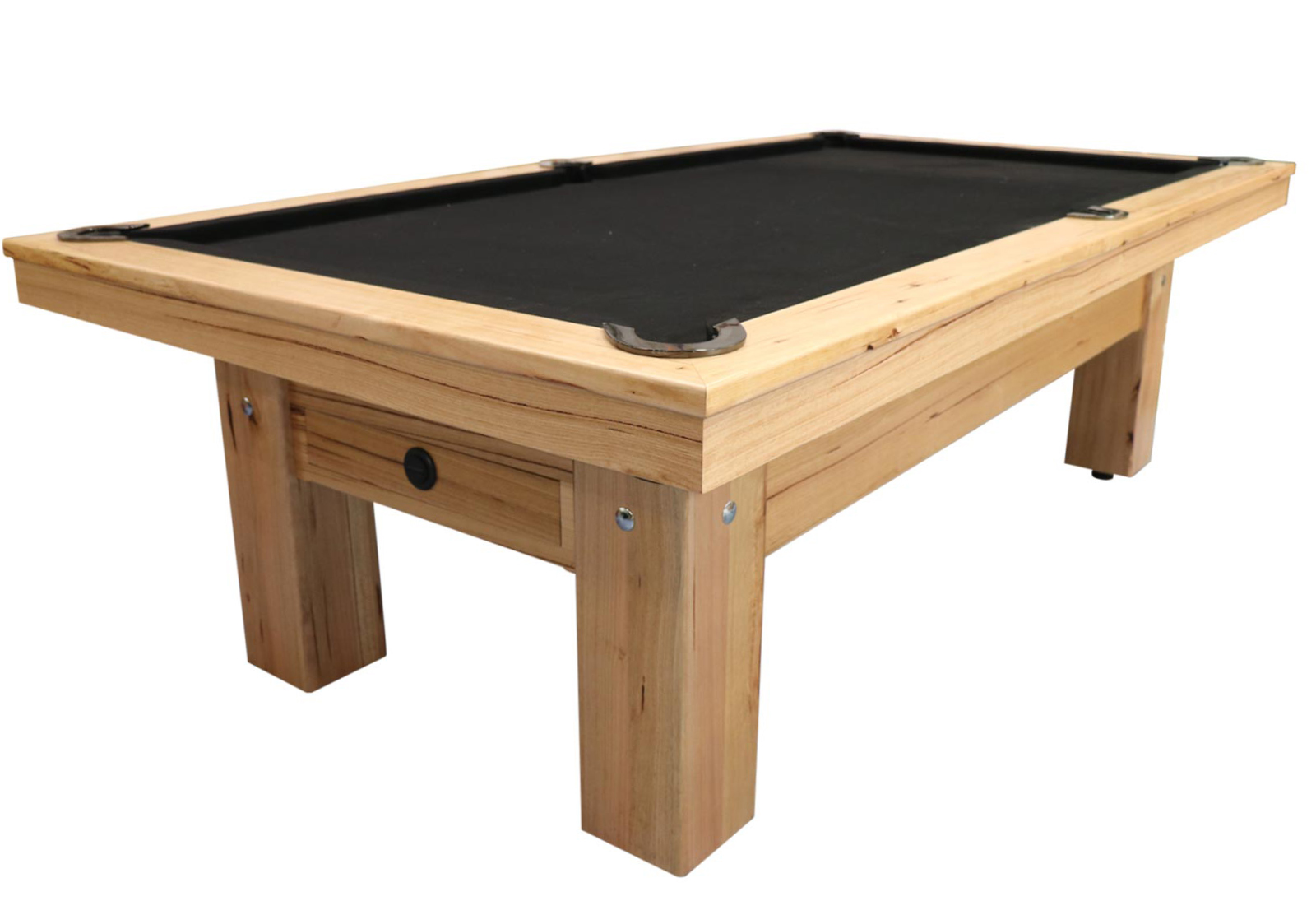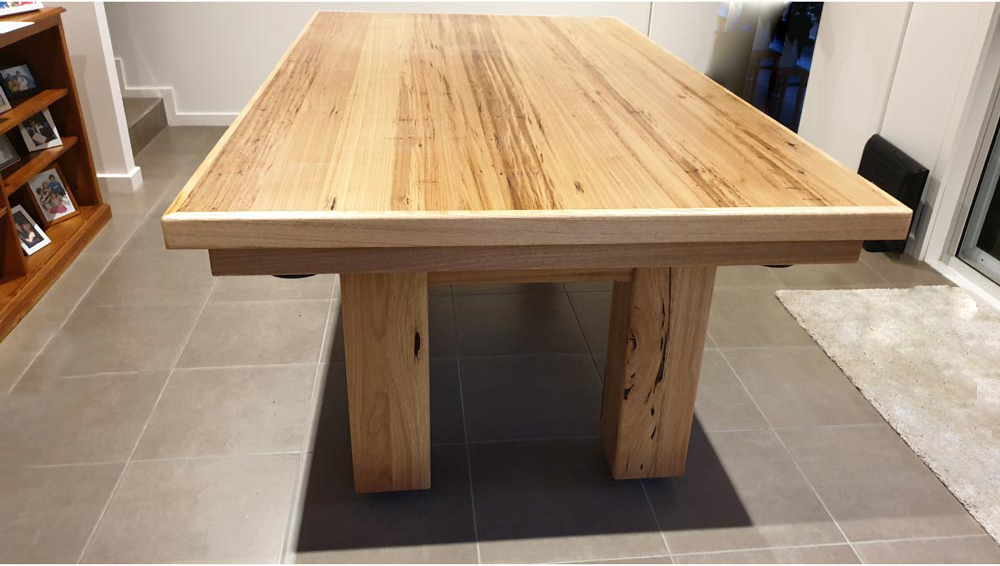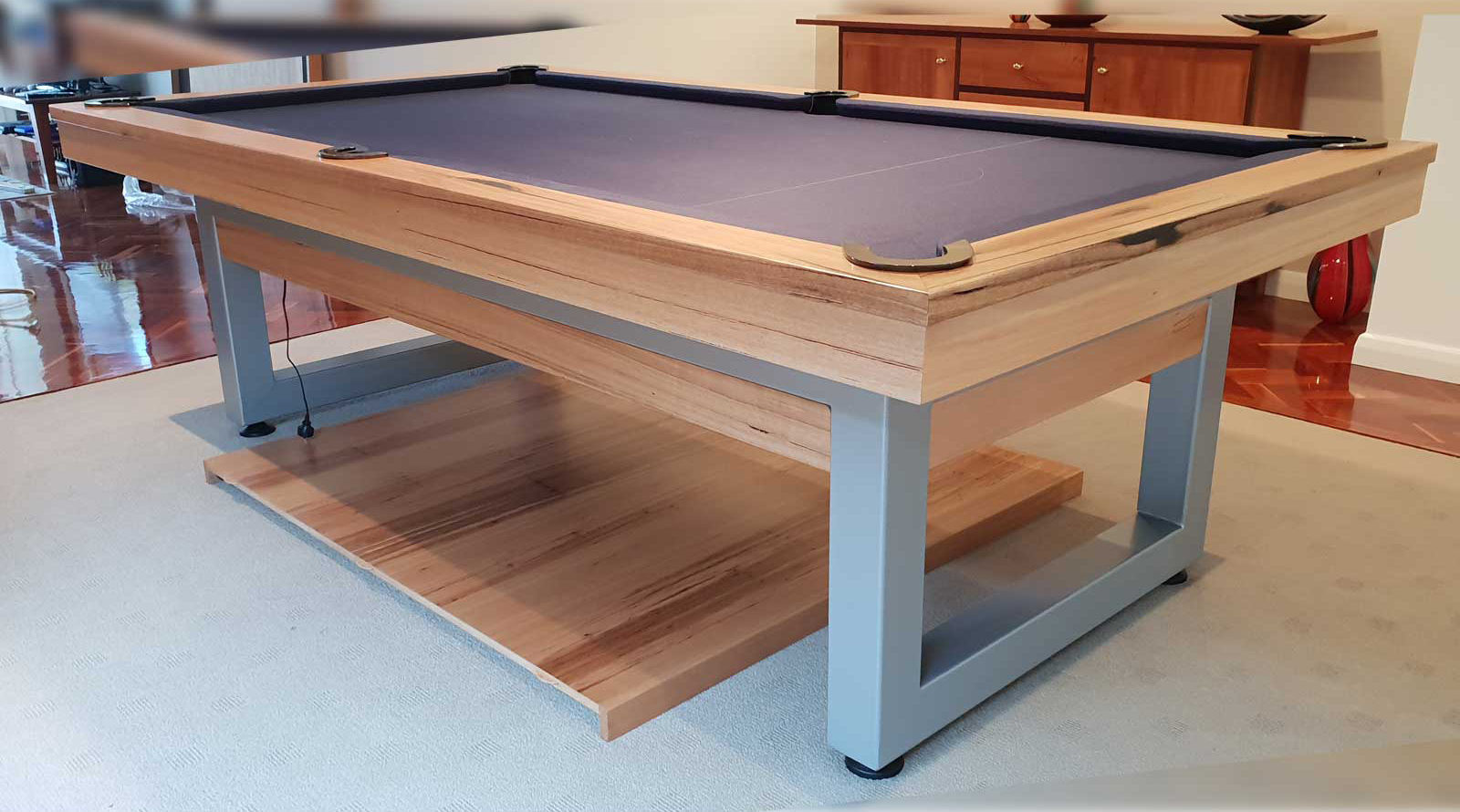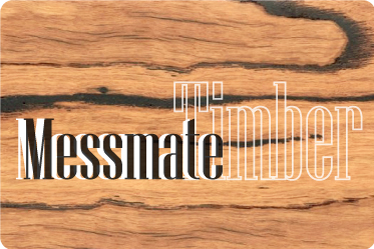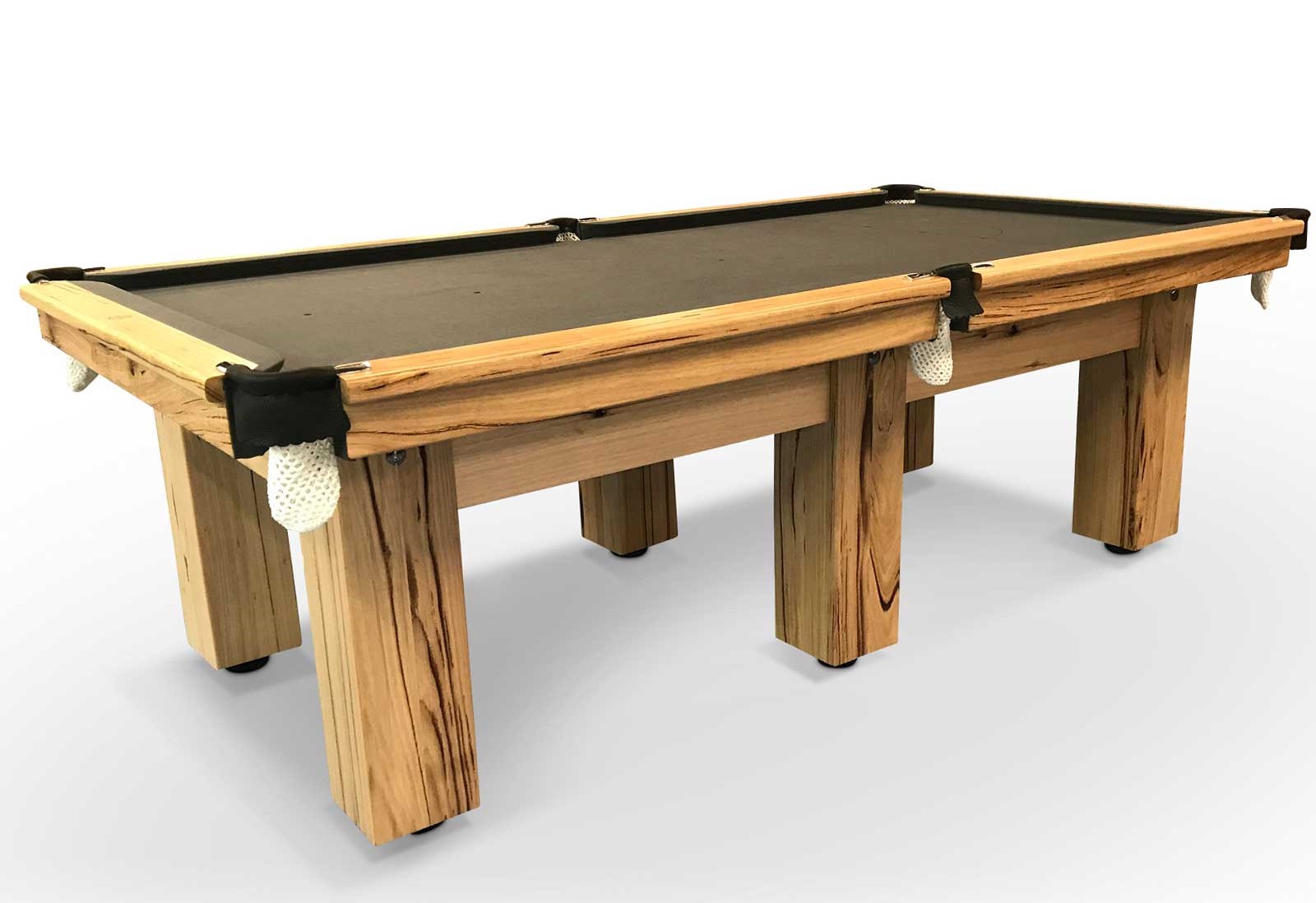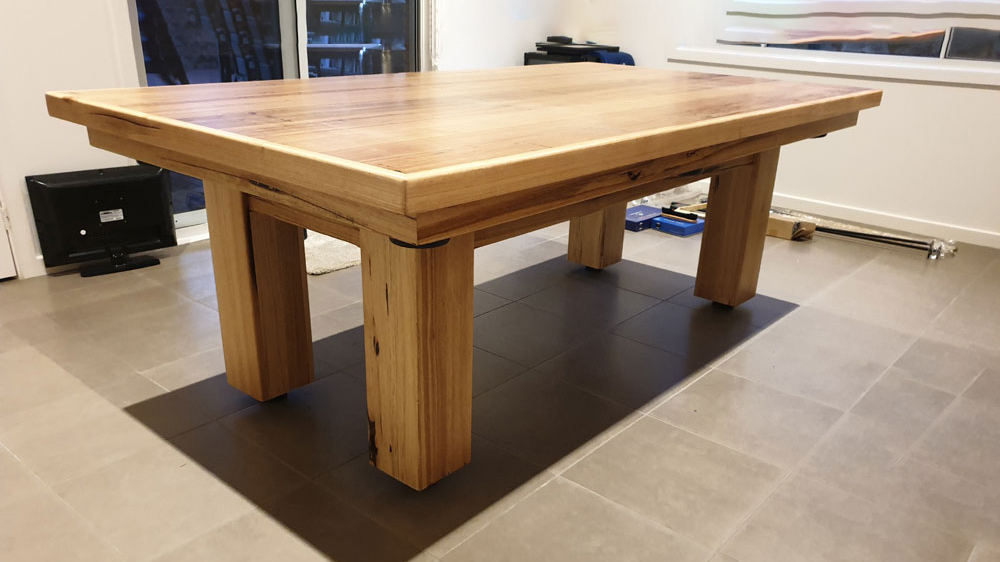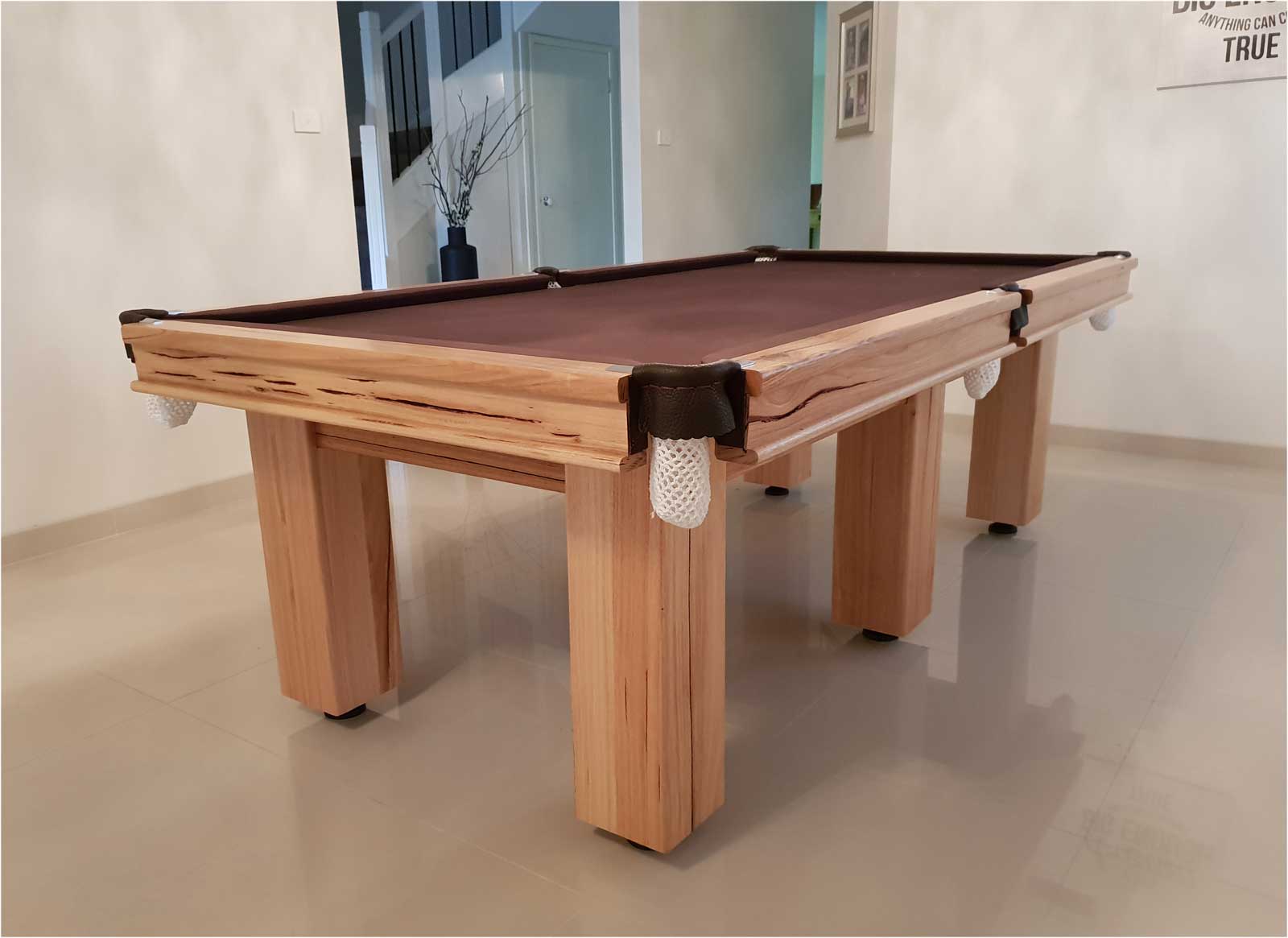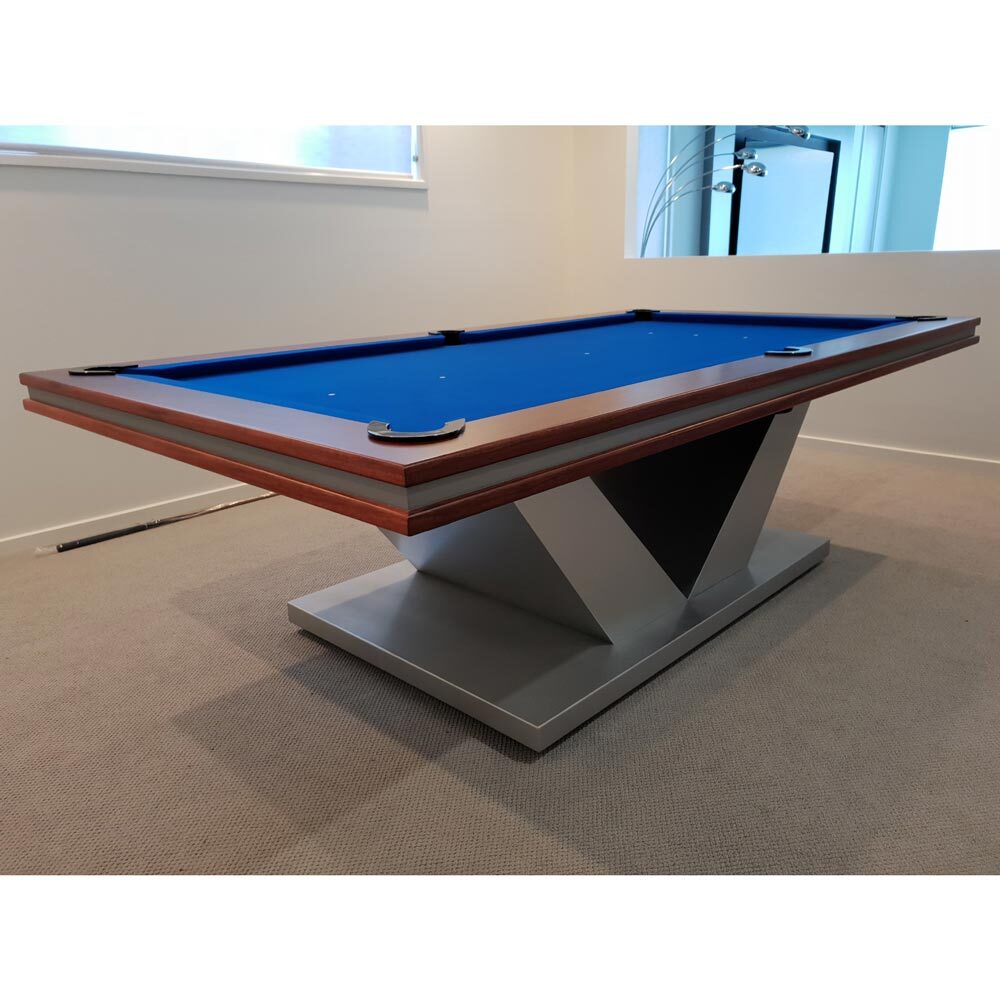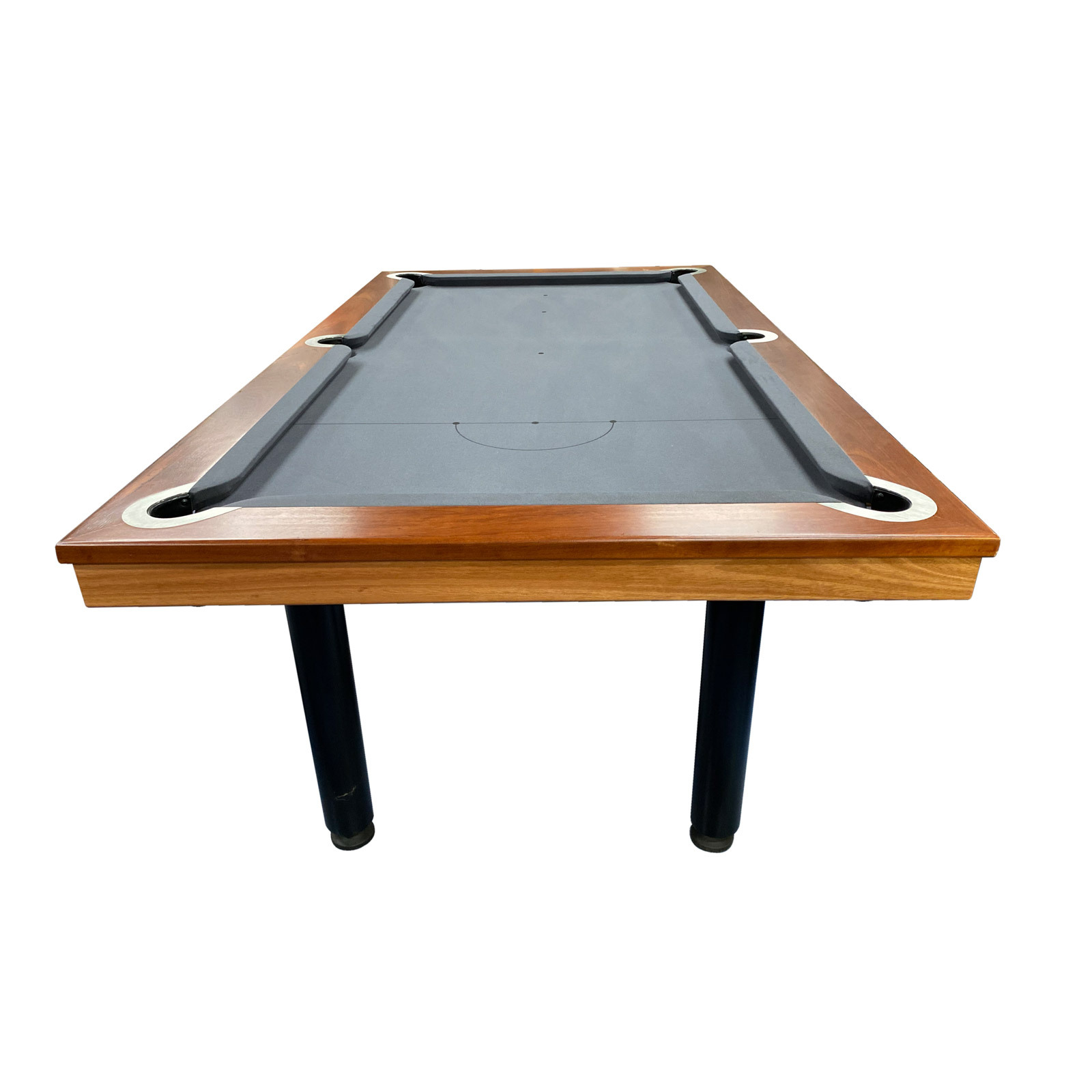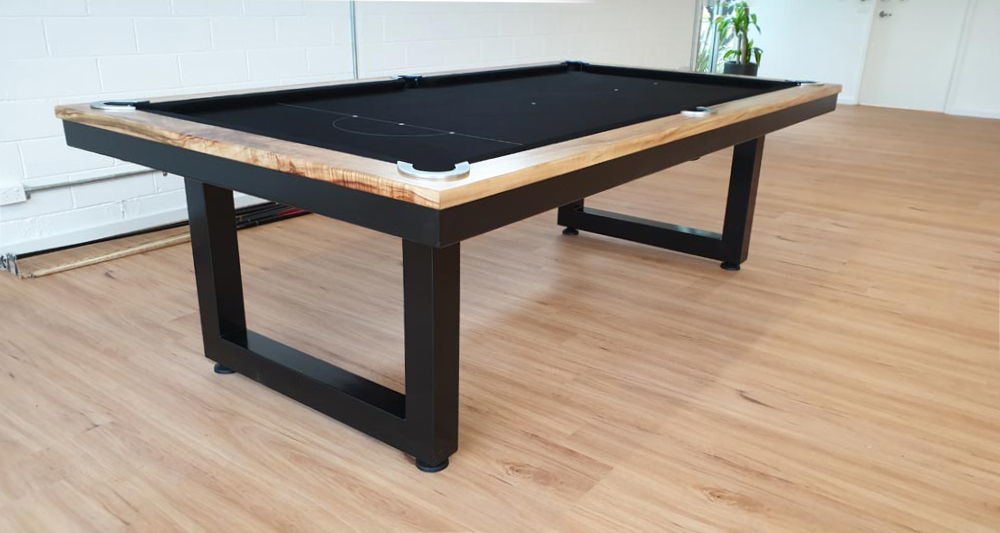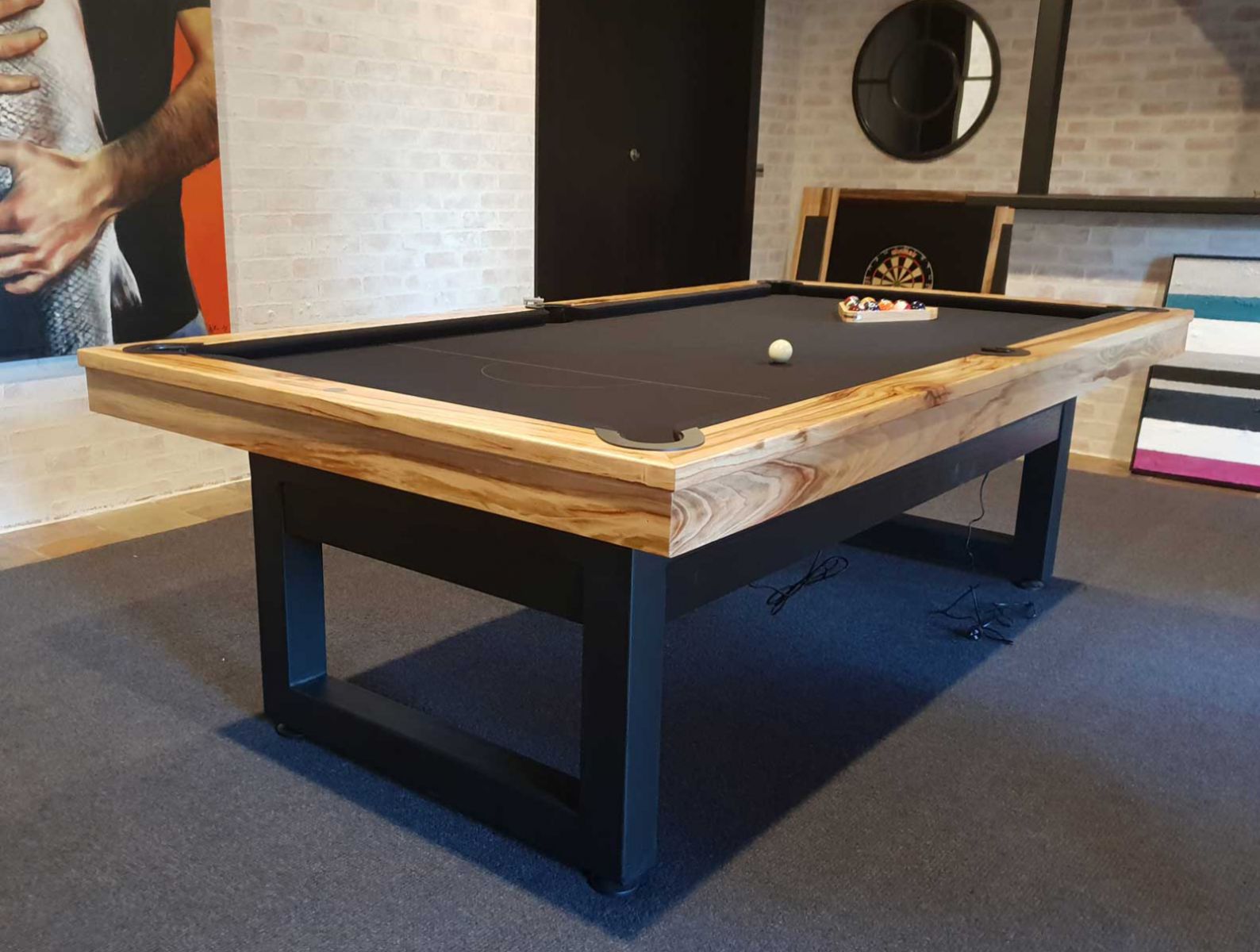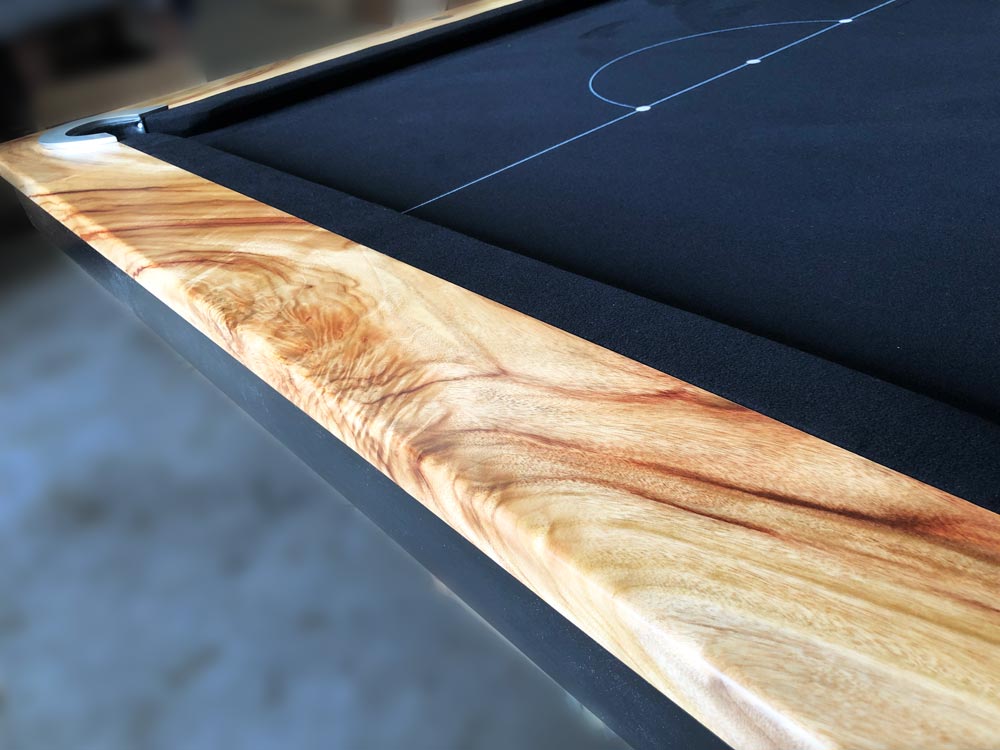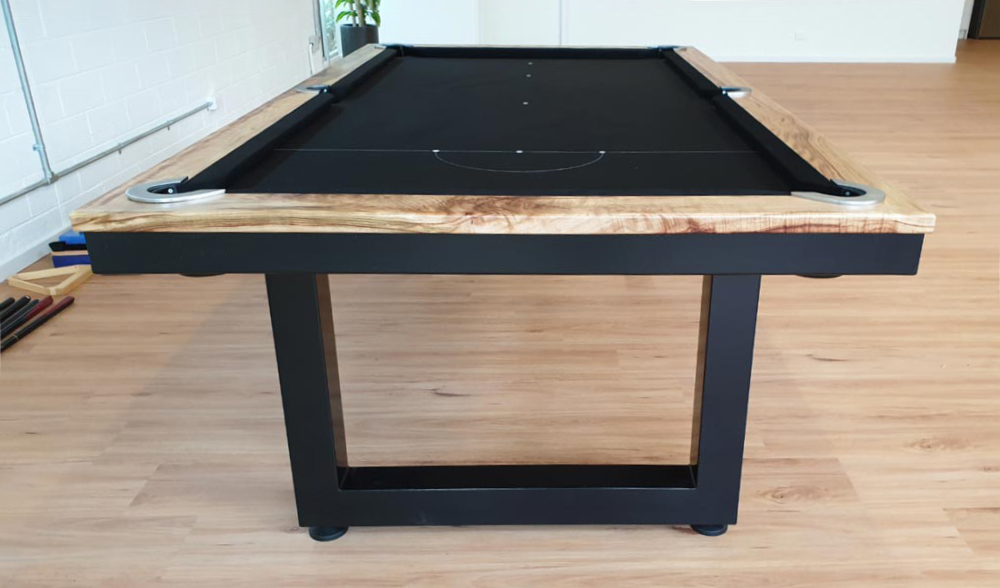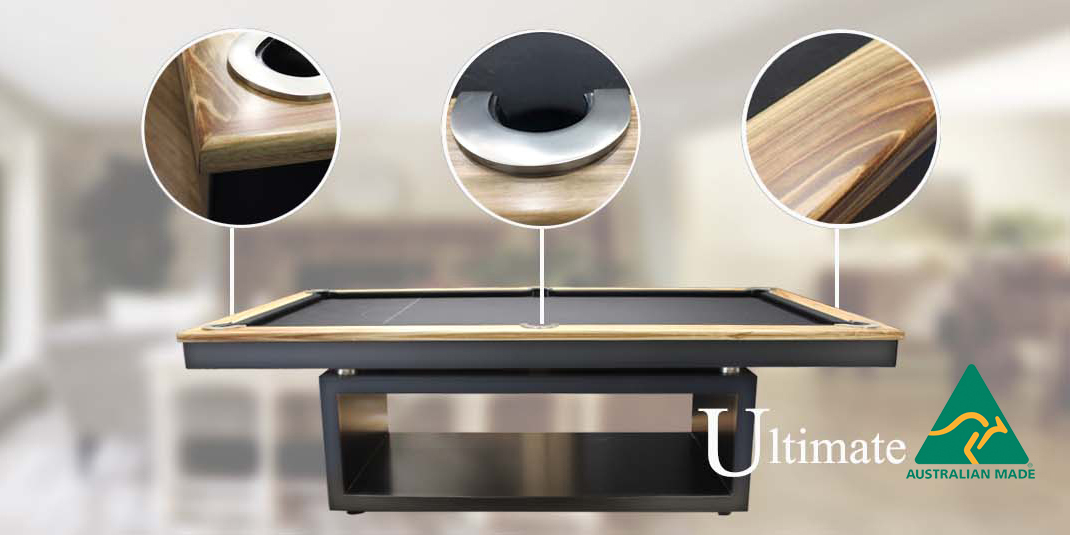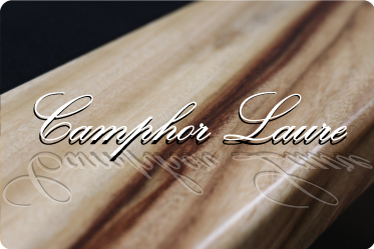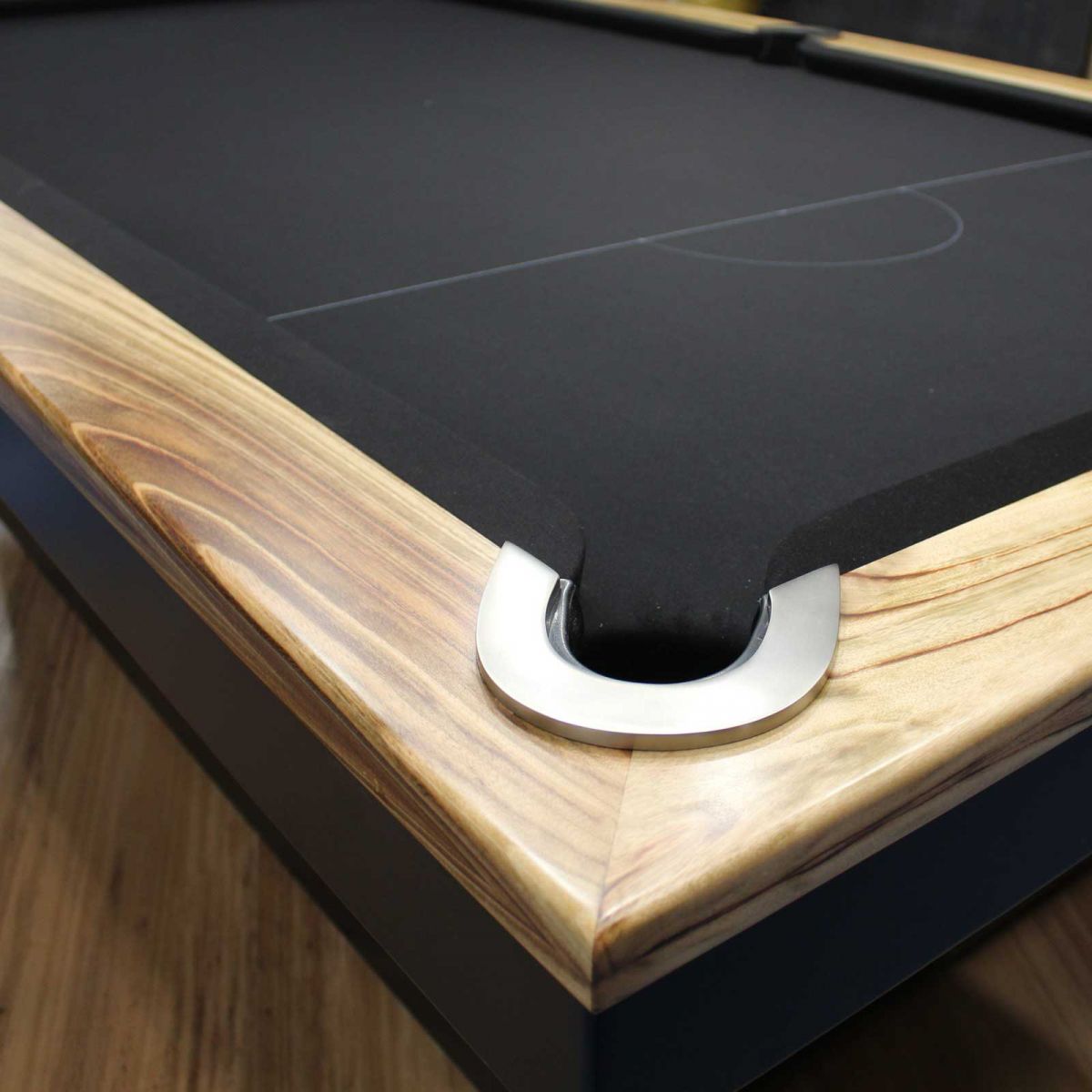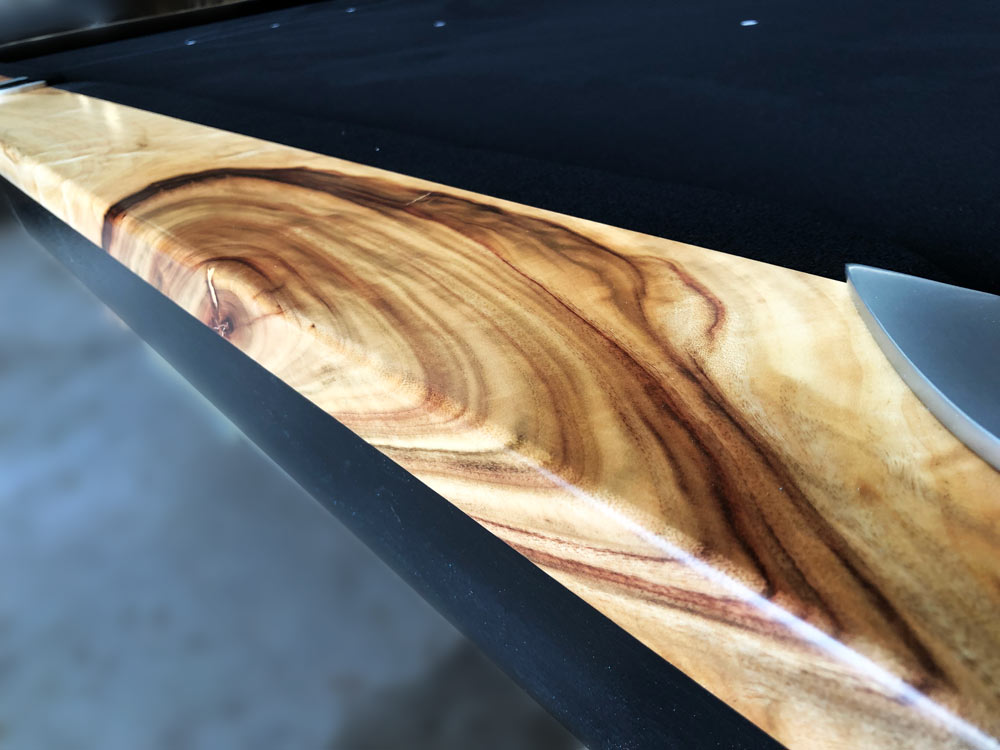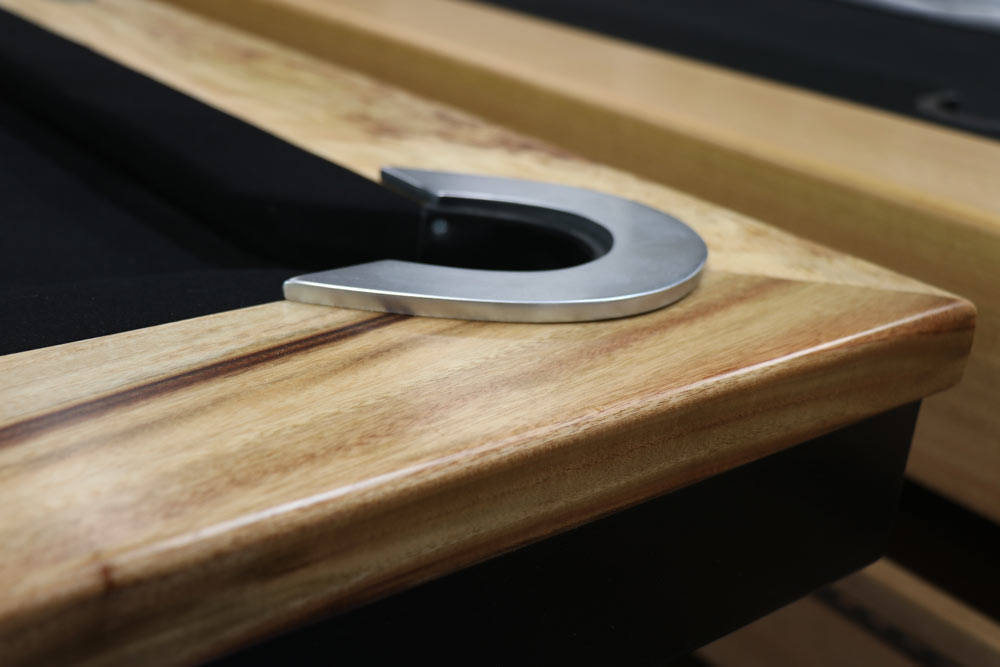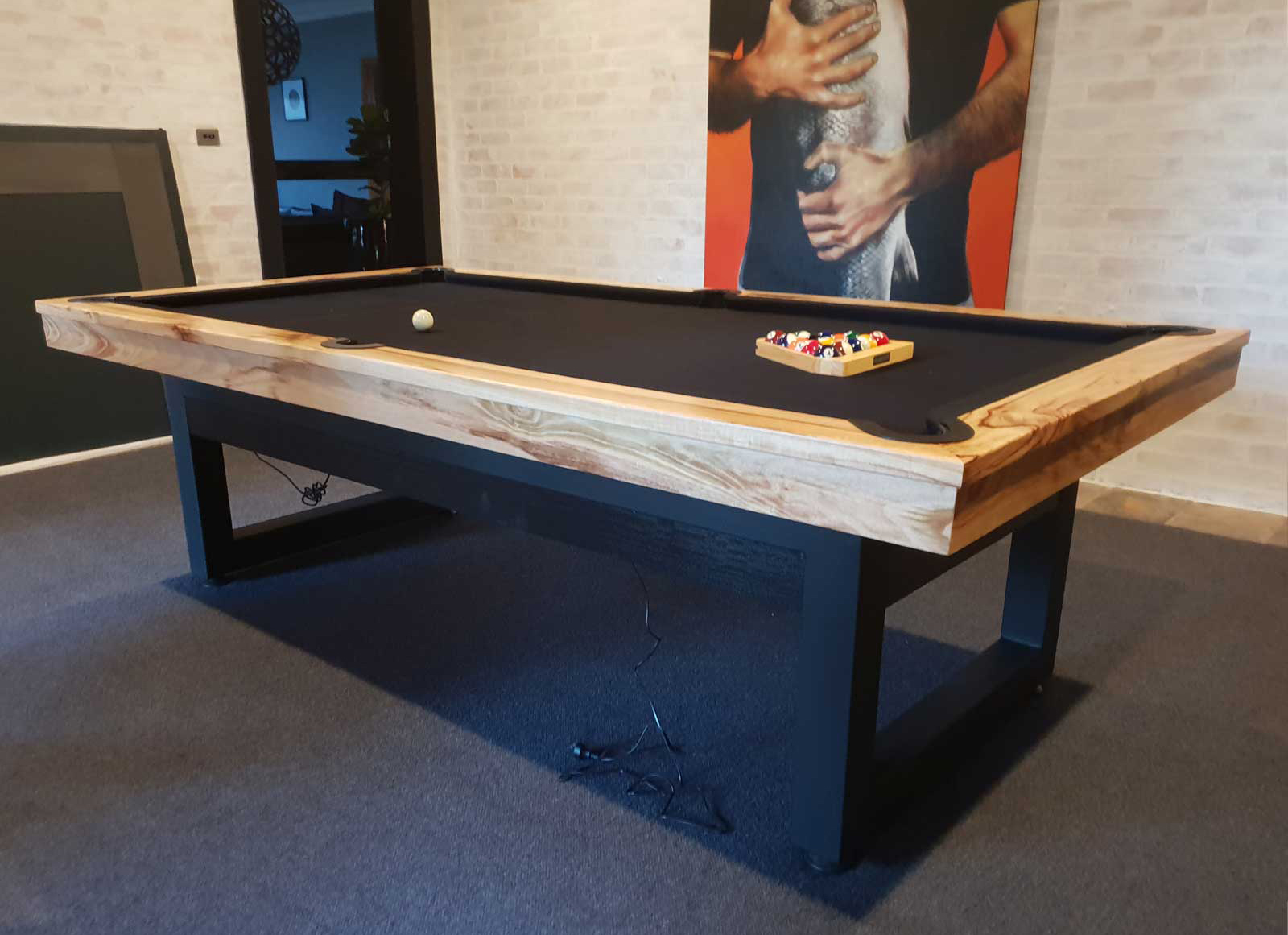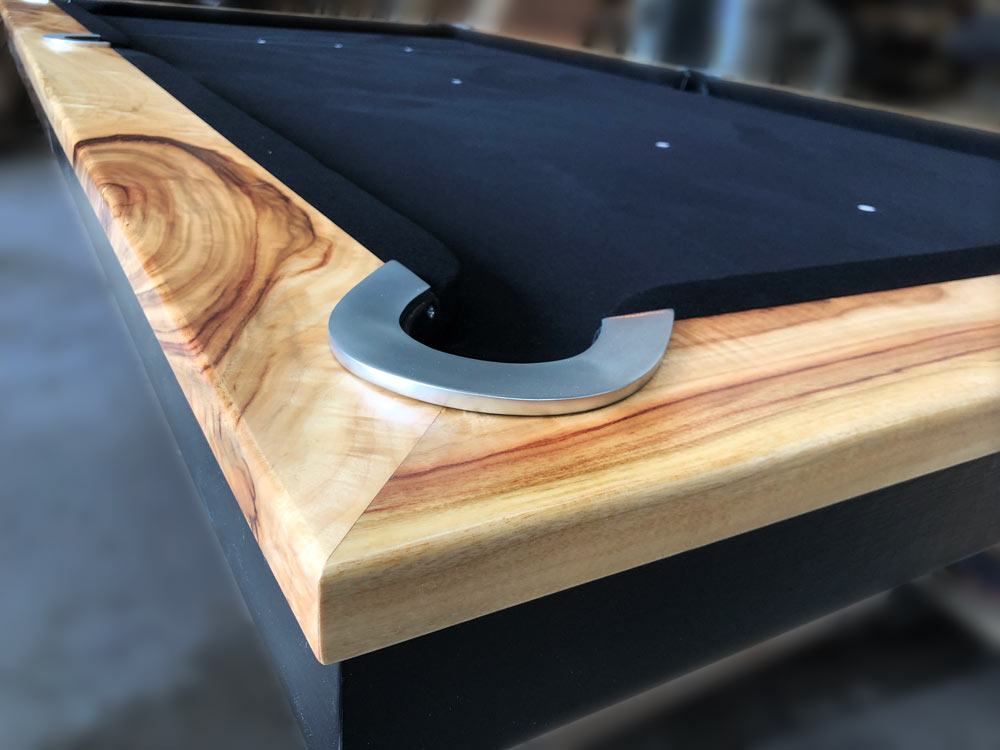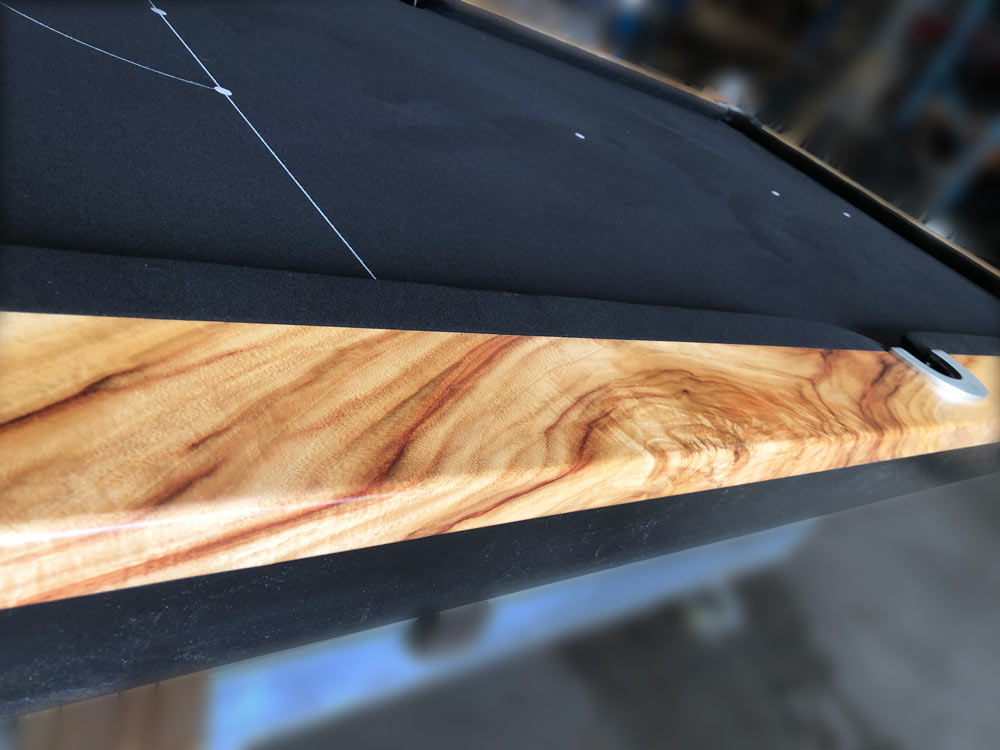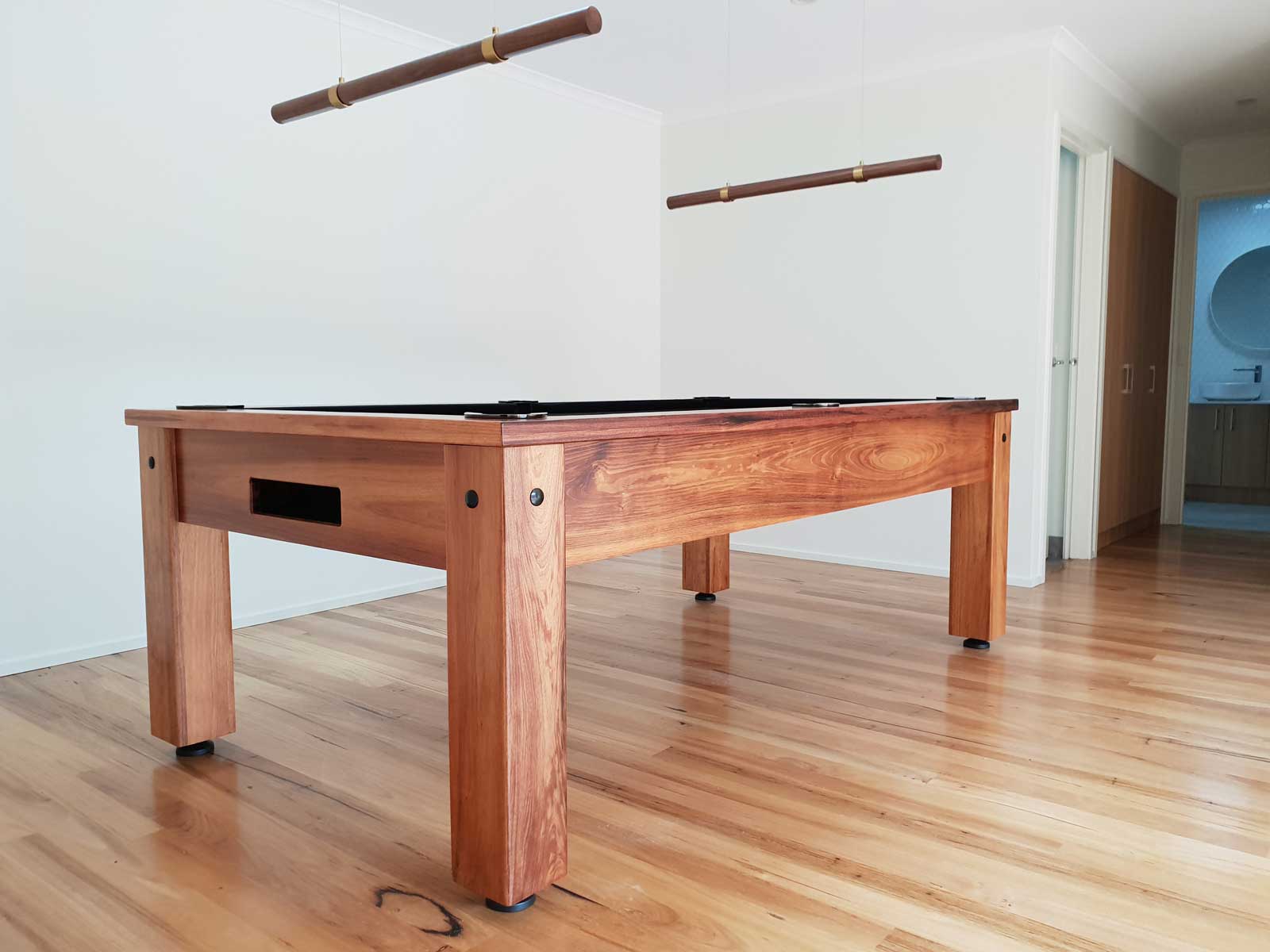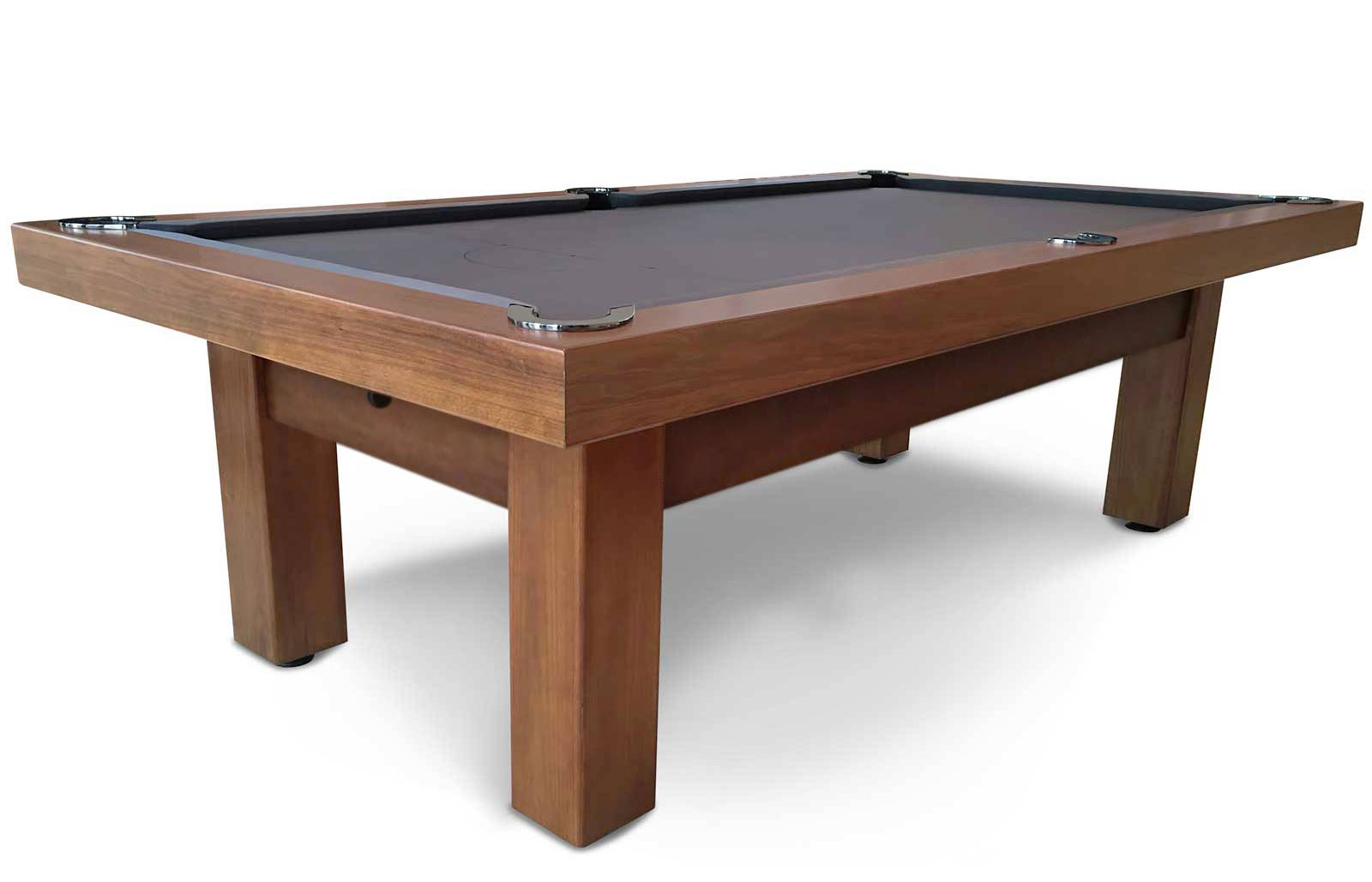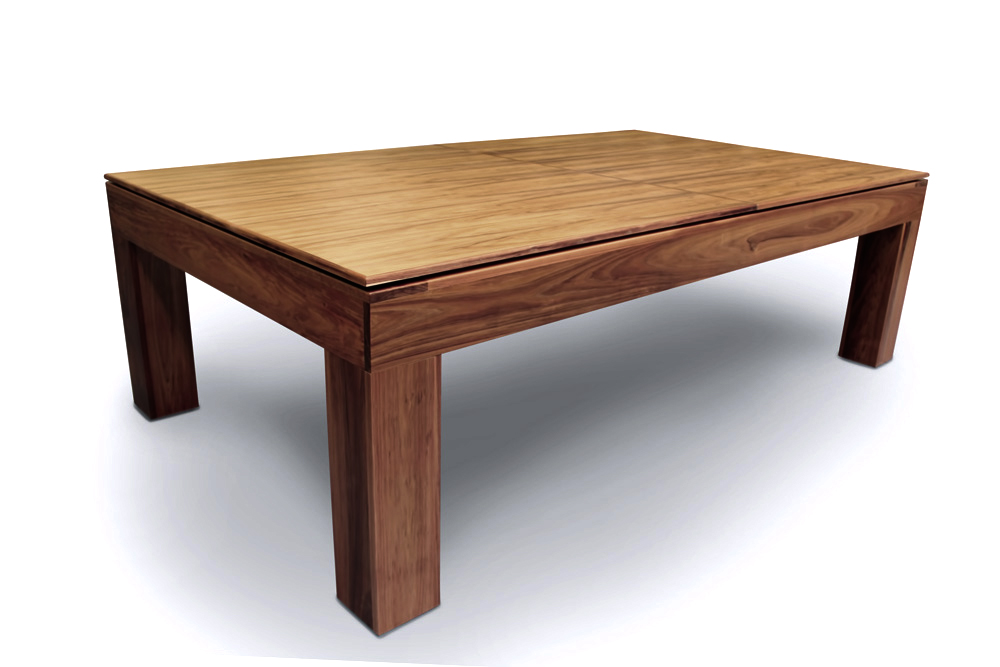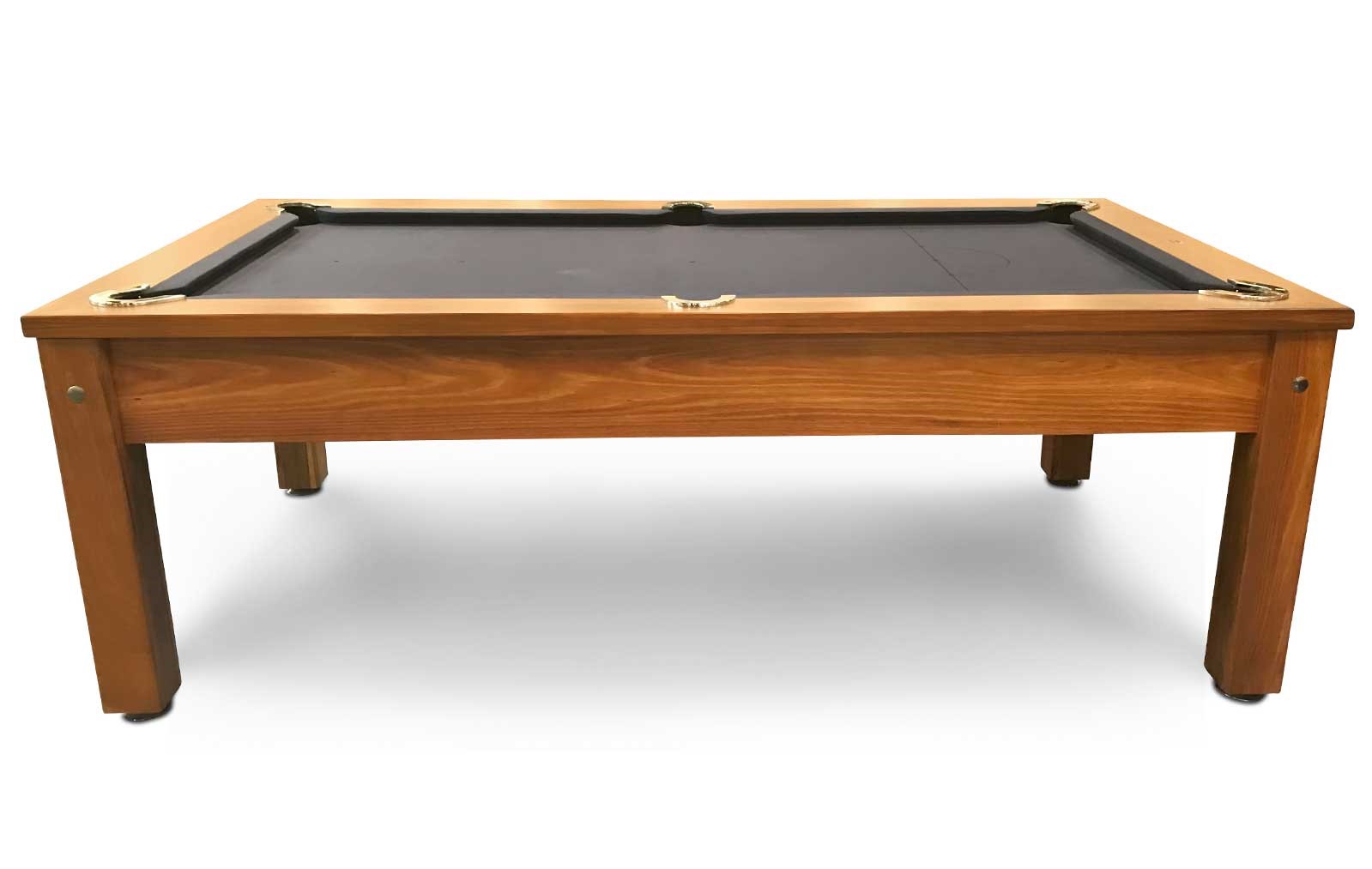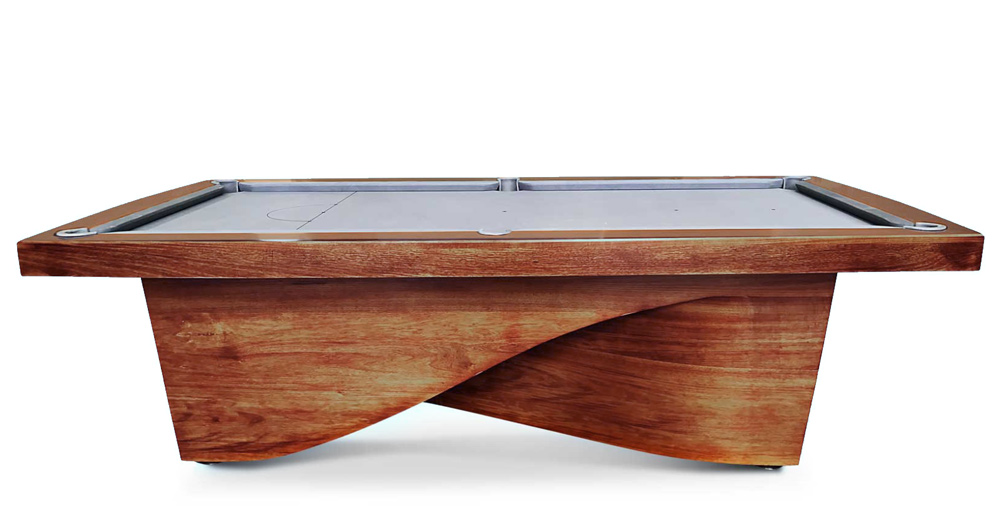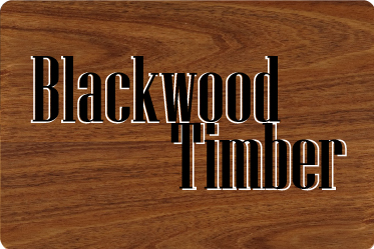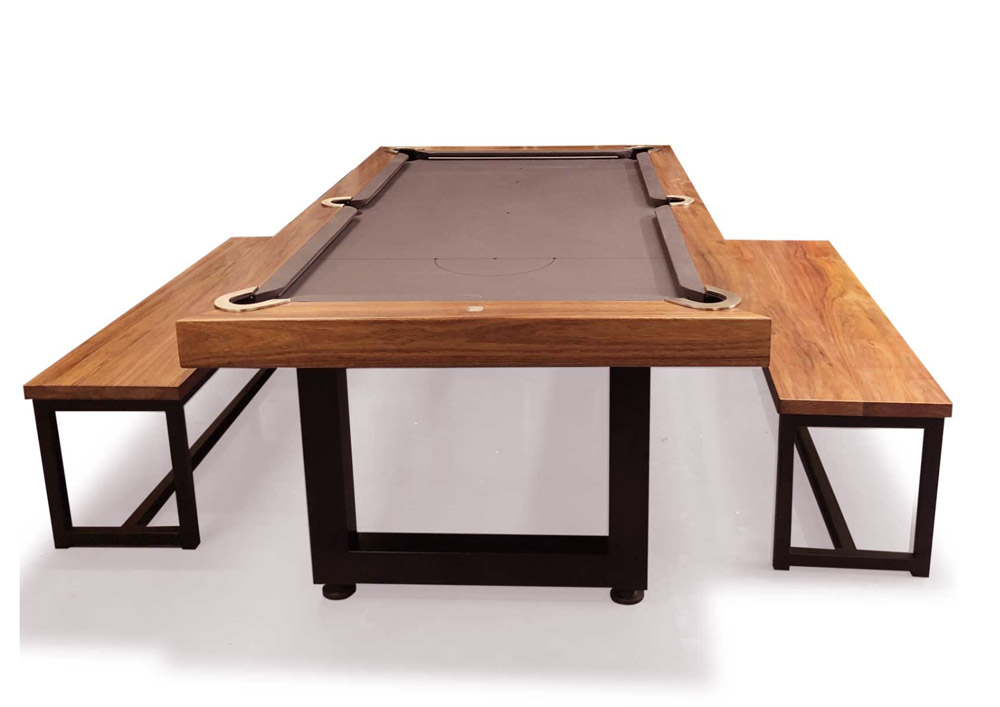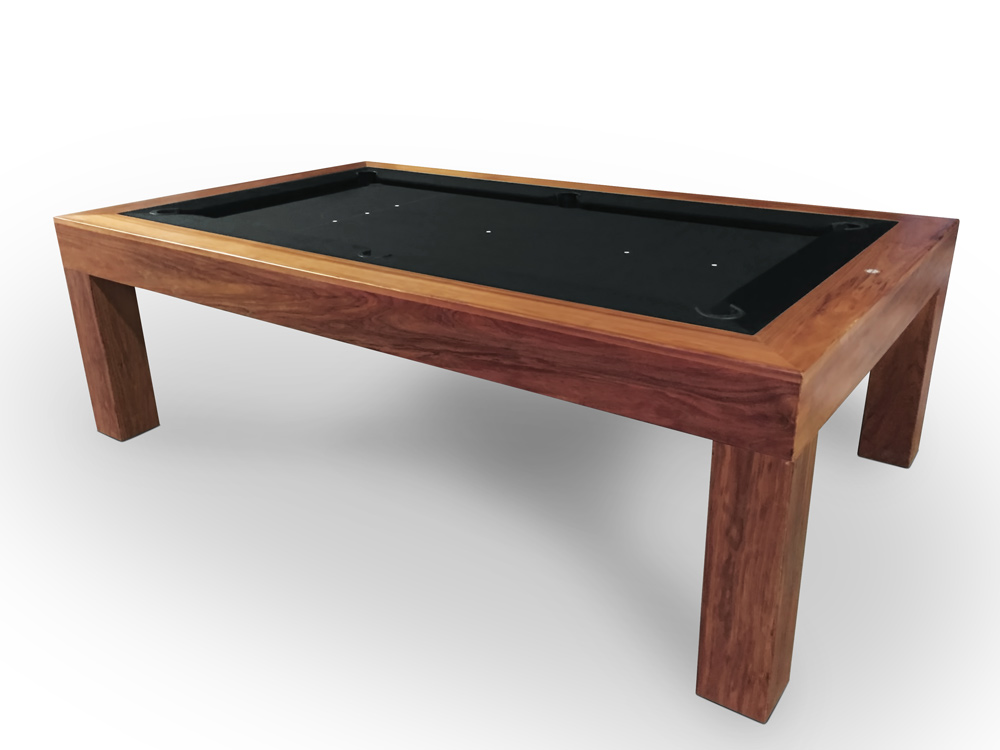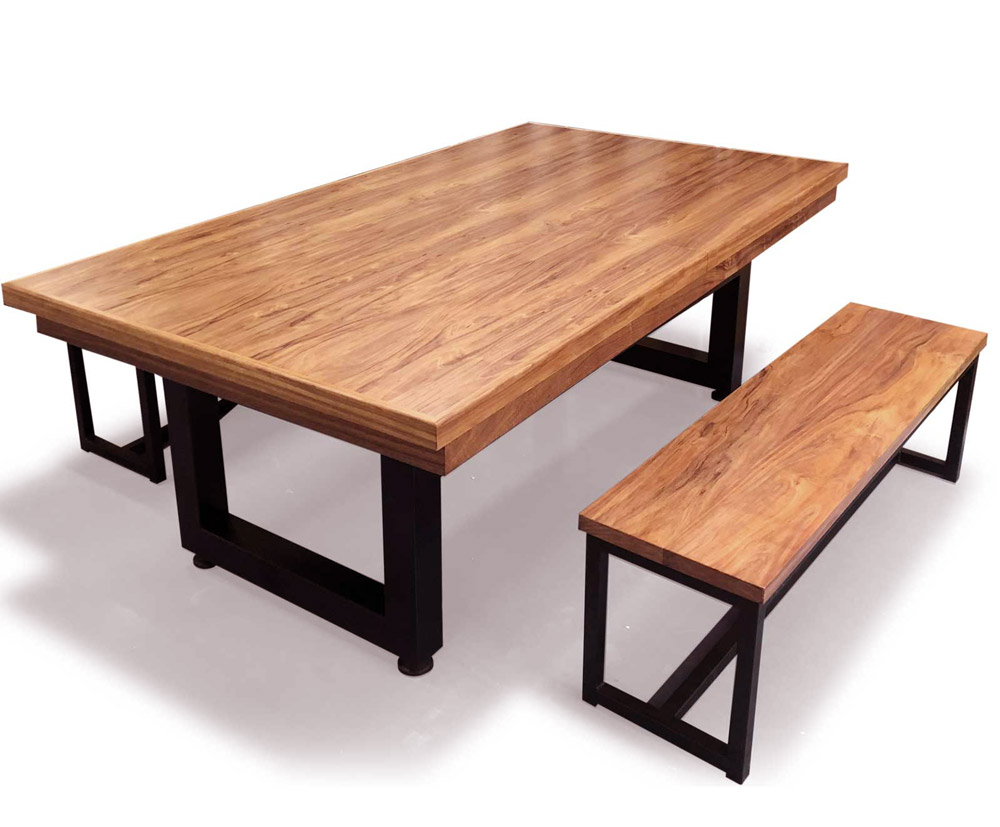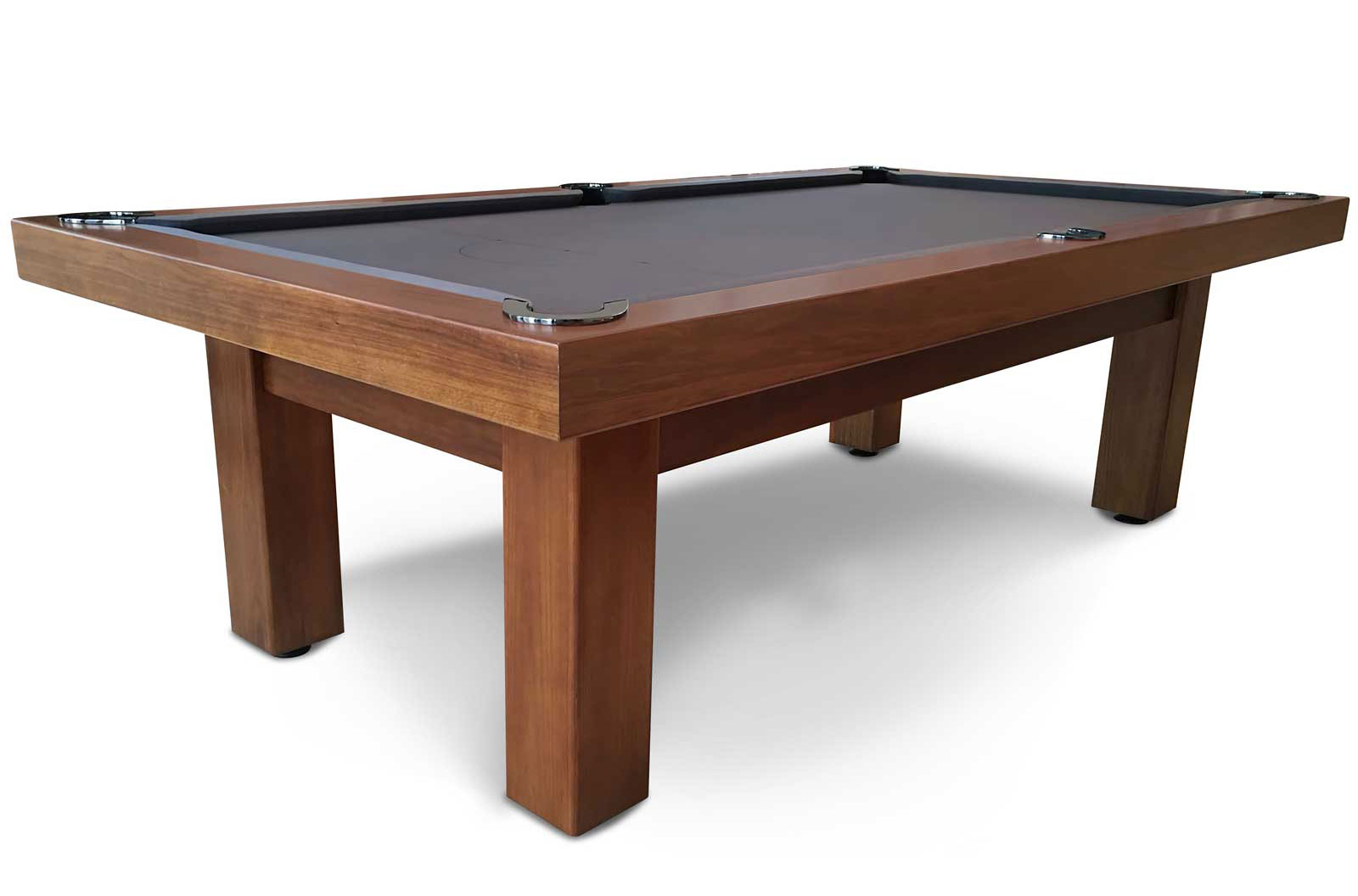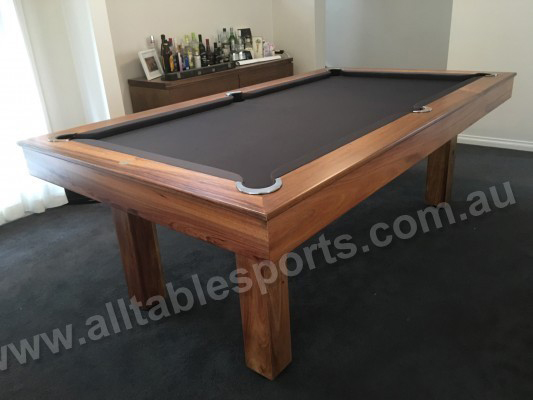Custom Made Timber Pool Table
Choose from a range of Australian timbers, and aspects of the design to fulfil your desire for your own personalised custom-built pool table.
Tassie Oak / European Oak
Other Names:Tasmanian Oak
Tasmanian oak is a premium Australian hardwood timber encompassing three species that grow in the mountainous areas of Tasmania. It is a versatile timber perfect for both construction and interior applications, including flooring, panelling, architraves and skirting boards.
Tasmanian oak is the name used for three almost identical species of eucalypt hardwoods that are normally marketed collectively. E. delegates (alpine ash) occurs at higher altitudes, while E. regnans (mountain ash) is found in wetter sites; E. obliqua (messmate) has a wide distribution, occurring in wet forests but also extending into drier areas. Tasmanian oak is light in colour, varying from straw to reddish brown with intermediate shades of cream to pink. It is recognised for its excellent staining qualities, which allow ready matching with other timbers, finishes or furnishings.
American Oak
American Oak is ....
Zebra Timber
Other Names:Zebrawood/ Zebrano / Microberlinia
The wood of Microberlinia (also known as Zebrano) is imported from central Africa, (Gabon, Cameroon, and Congo). The heartwood is a pale golden yellow, distinct from the very pale colour of the sapwood and features narrow streaks of dark brown to black. Zebrawood can also be a pale brown with regular or irregular marks of dark brown in varying widths. It is almost always quarter sawn to get the exciting alternating colour pattern. It is a heavy, hard wood with a somewhat coarse texture, often with an interlocked or wavy grain. The interlocked grain of this wood, like that of many tropical woods, can make it difficult to work. It is also a decorative exotic wood, used in a limited way for veneer, wall panelling, custom furniture, furniture trim, inlay bandings, marquetry, specialty items and turnery. It is also sometimes seen as stocks of shotguns and rifles or in exotic guitars. Because of its hardness, it can also be used for skis and tool handles.
Marri Timber
Other Names:
Marri is a distinctive bloodwood native to Western Australia. It is an adaptable tree that grows in both jarrah and karri forests in the state's southwest, from north of Geraldton to Cape Riche and inland beyond Narrogin, and can also be found on the Swan Coastal Plain and Darling Scarp.
Marri is often called red gum due to the gummy red protrusions often seen on its trunk. As the name suggests, the timber is high in gum, resulting in low recovery rates of first grade timber. In the past, few timber millers produced it, however marri's feature grain has become more popular in recent times for making fine, handcrafted furniture.
The dark red gum of the marri tree contrasts beautifully with the yellow to pale brown heartwood, while the 40mm wide sapwood is noticeably paler and often tending to white. Marri has a rather coarse but even texture with slightly interlocked grain. Gum veins are common and logs are generally sound to the centre.
Marri timber is increasingly used for modern household furniture. The finished honey-coloured timber with a distinctive vein structure makes handsome flooring. It can also be used for general construction, handles, oars and sporting equipment, while preservative-treated material is useful for piles, poles and posts.
Messmate Timber
Other Names:
Messmate is a hardwood native to Tasmania and Victoria and the tablelands of New South Wales and southern Queensland. It has been known to grow to 90 metres tall, with a trunk up to three metres in diameter.
A well-known Australian hardwood that is in high demand for a wide variety of applications, messmate is often sold with mountain ash as Tasmanian oak. It varies in colour from pale browns through to light yellows with subtle hints of peach. The sapwood is pale yellow to pale brown, with light brown heartwood. A species rich and warm in detail, it has an even, moderately coarse texture. The sometimes interlocking, straight grains feature beautifully defined rings. Gum veins are quite common. Messmate timber has moderate hardness and strength.
camphor Timber
Other Names:
Camphor laurel yields a beautiful, rich honey-coloured timber with a clean, fresh camphor smell that is perfect for furniture, carving, and cabinetry. The tree is native to Taiwan, southern Japan, southeast China and Indochina, where it has great cultural significance as a source of scent, oil and crystallised blocks for use in religious ceremonies and for medicinal purposes. It is used as a valuable timber for furniture and carving icons.
Camphor laurel timber is excellent for creating fine furniture. Its heartwood varies widely in colour from pale to mid brown and is often streaked with darker brown or red. The sapwood is very wide and pale brown. The timber’s grain is usually interlocked with a moderately fine and even texture. All camphor laurel wood features the characteristic camphor smell that repels moths and other insects, making it perfect for clothes storage cabinets. Camphor laurel also has antibacterial properties prized for use in crafting handsome chopping and carving boards.
The camphor laurel's extraordinary strong dark grain against a yellow base creates distinctive furniture. In the past it has been exported to Asia and later re-imported as a finished furniture product. It is also recommended for use as slabs in kitchen benchtops, tables and shelves, as well as decorative veneers, internal lining boards and turned or hand-carved bowls.
Blackwood Timber
Other Names:
Blackwood is a medium-sized Australian hardwood that grows in South Australia and the eastern states. In the wetter areas of Tasmania it is grown in large volumes for commercial use.
It is definitely an ‘appearance timber’, with heartwood that is a rich golden brown. This is sometimes complimented by reddish streaks or a narrow band of darker colour, indicative of the growth rings. The sapwood is much paler in appearance. Blackwood has a medium and even texture. Its grain can either be straight or have a wavy, fiddleback pattern, which is valued for furniture and veneers.
Blackwood is easy to work and nails and glues well. A smooth, polished finish can be achieved, making Blackwood ideal for furniture. It is also good for steam bending. If the grain is wavy then this may require the planer angle to be adjusted. It is important that safety precautions are taken when sanding Blackwood, as the dust can cause irritations.
While Blackwood is a durable, interior-use timber it has a low in-ground durability and is not ideal for external applications. It is readily available, especially in Tasmania, but may only be available in relatively small sizes.

